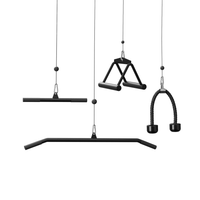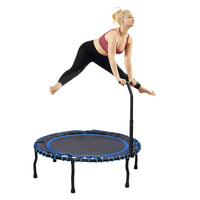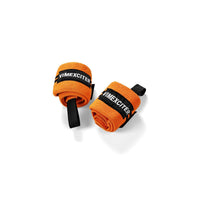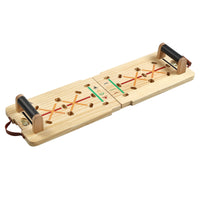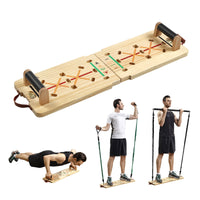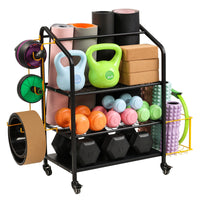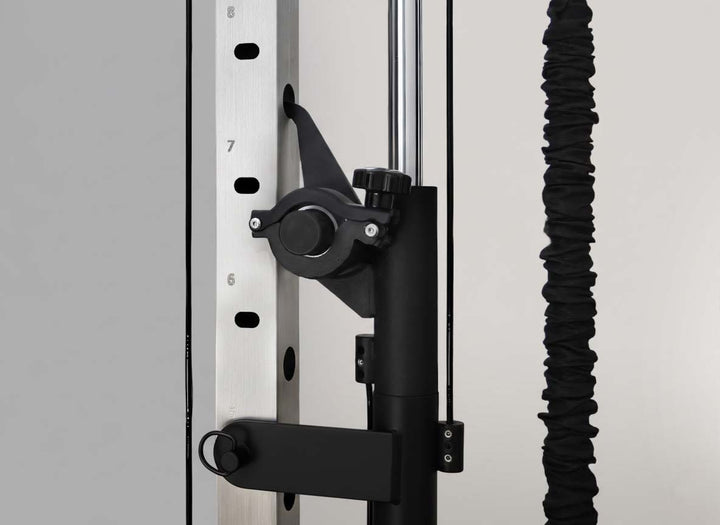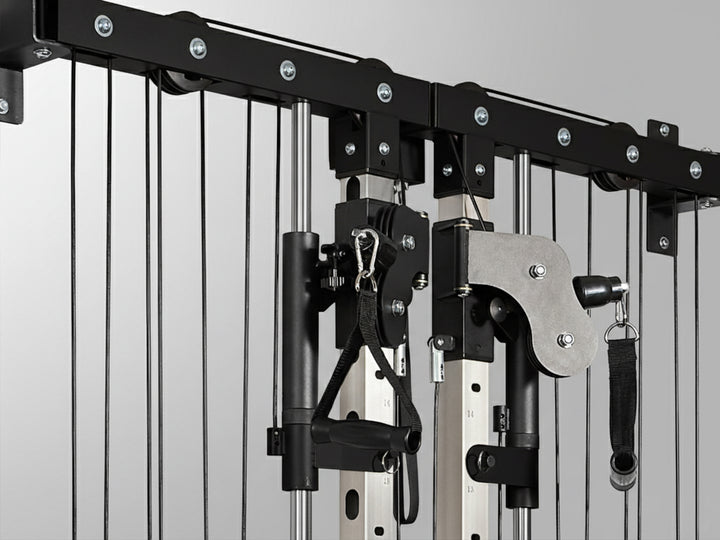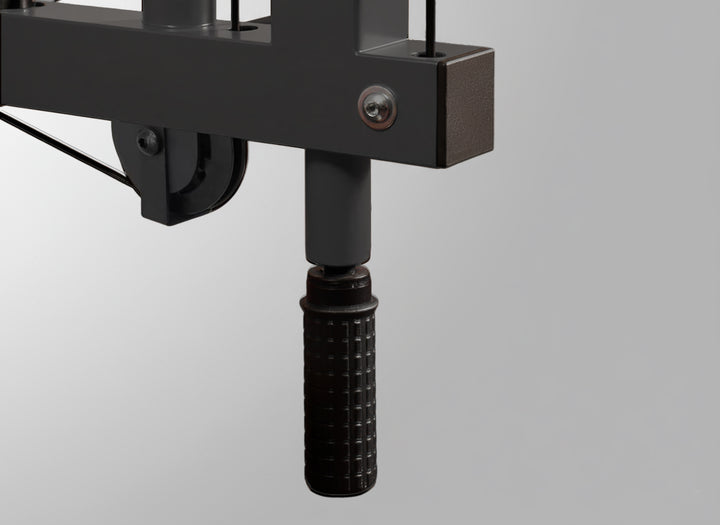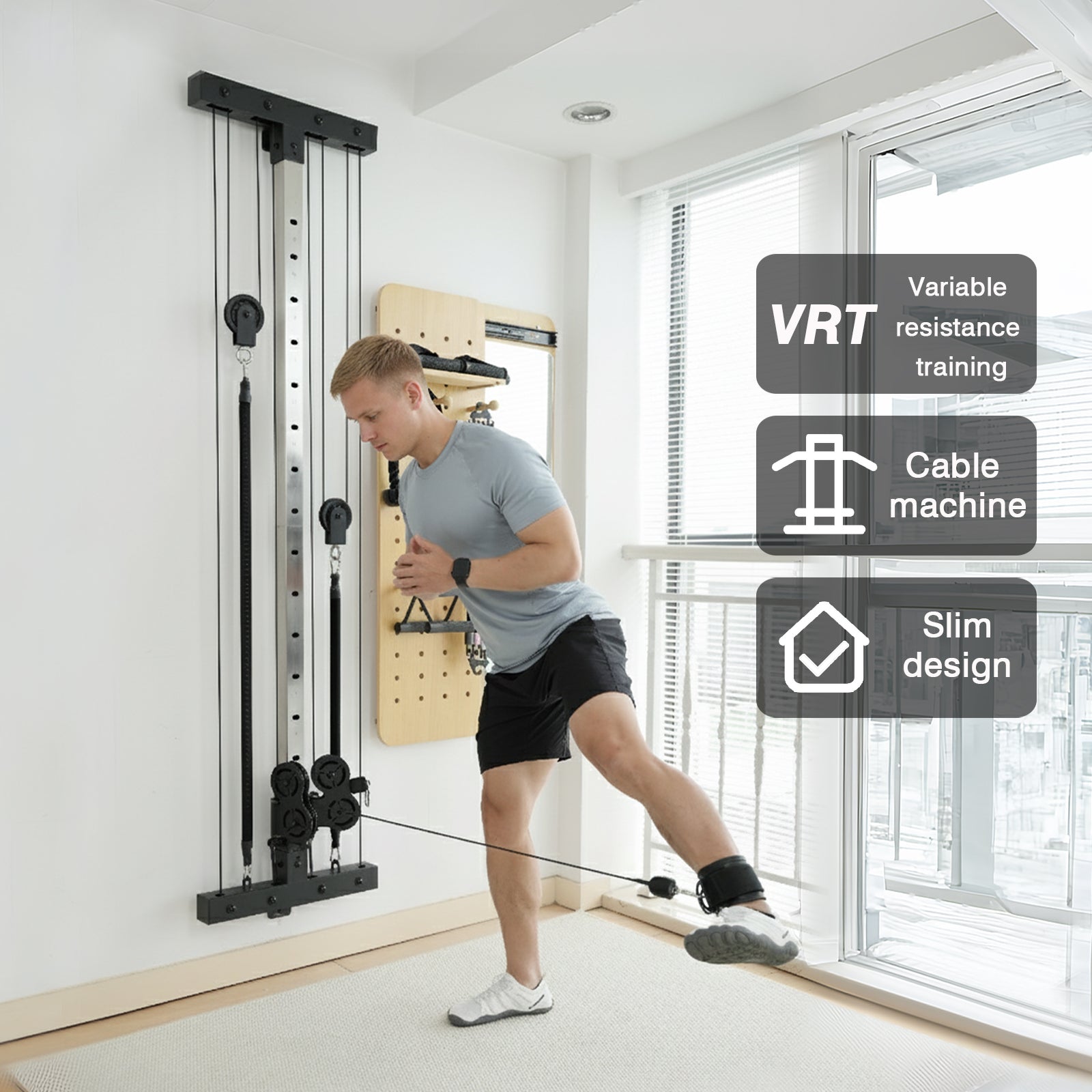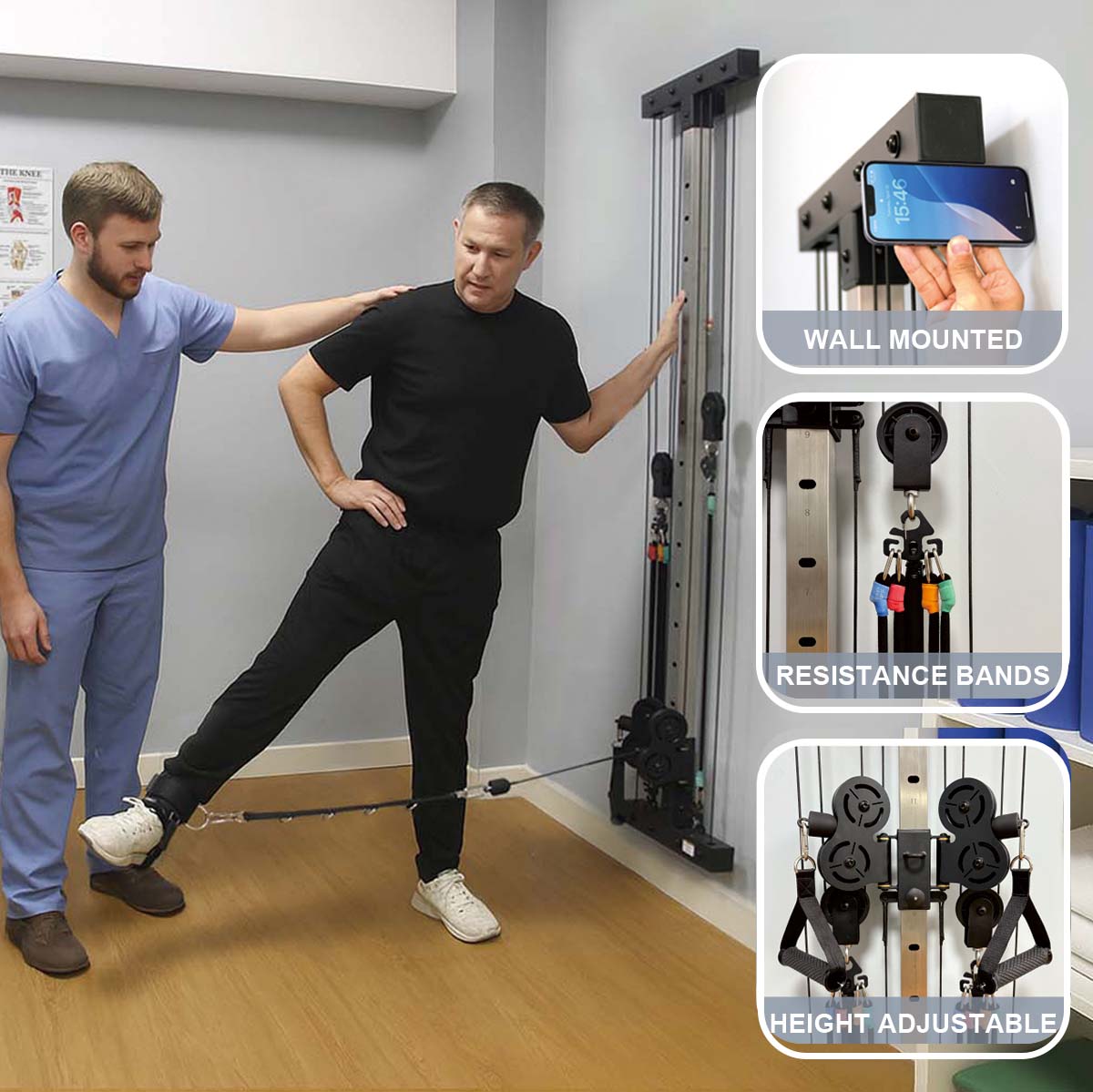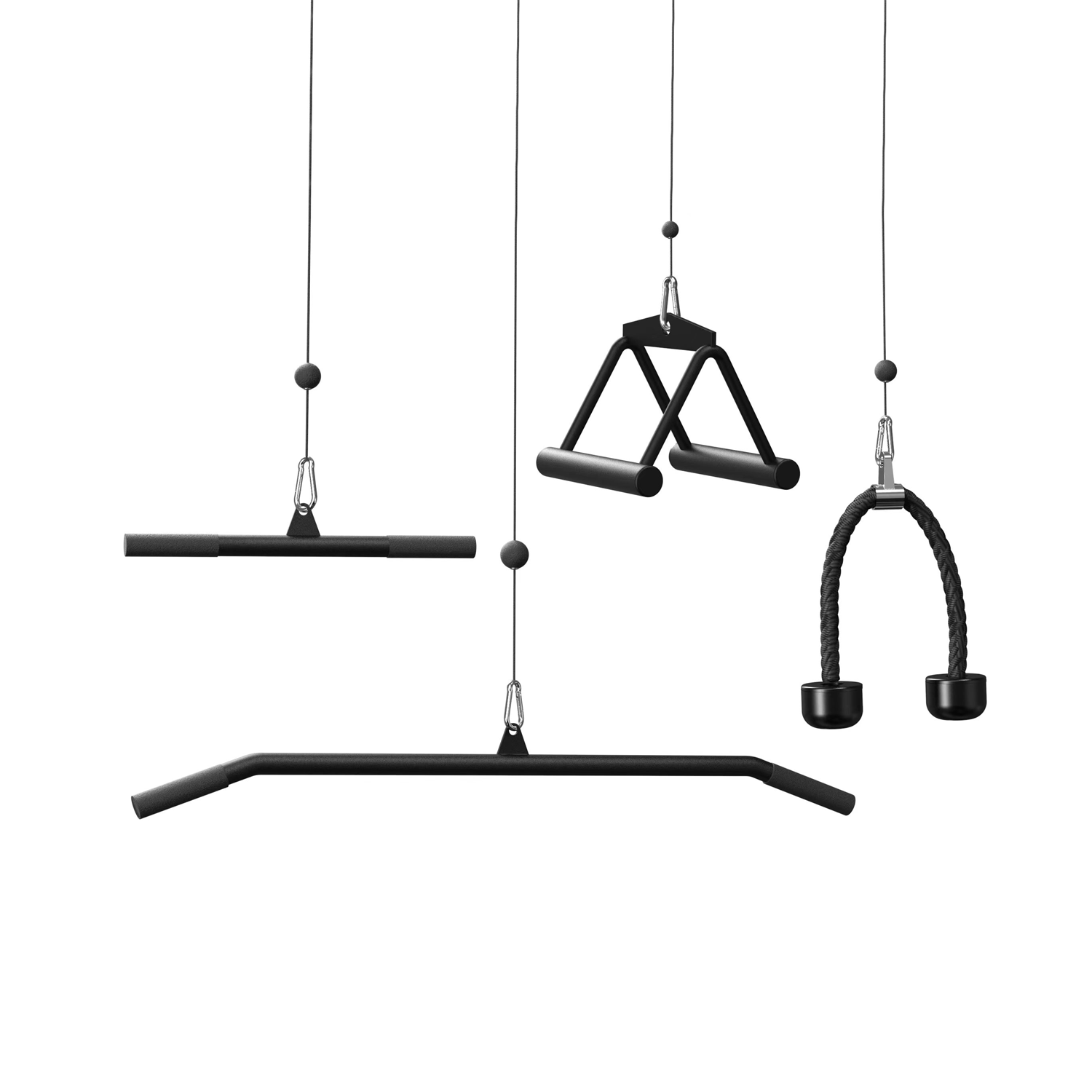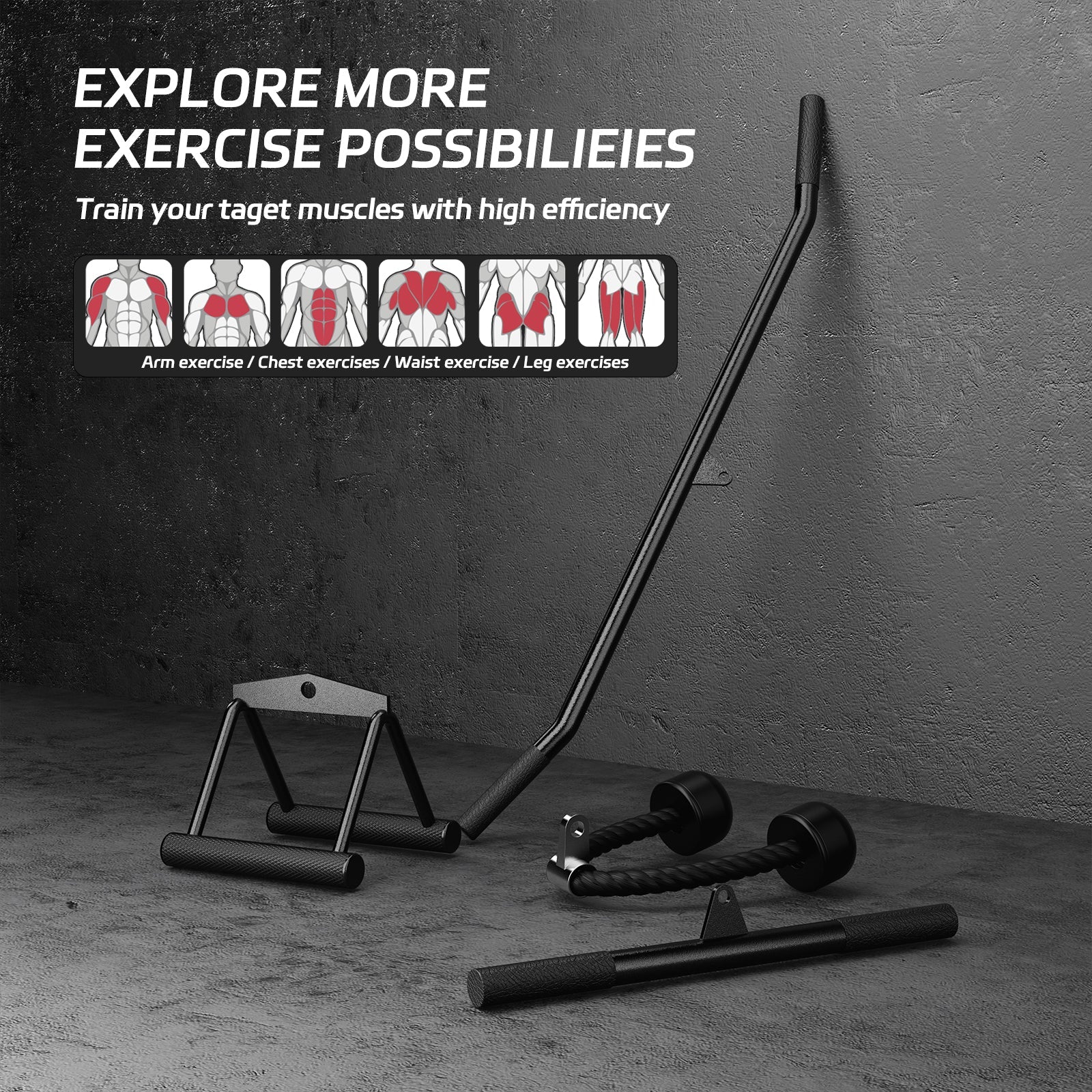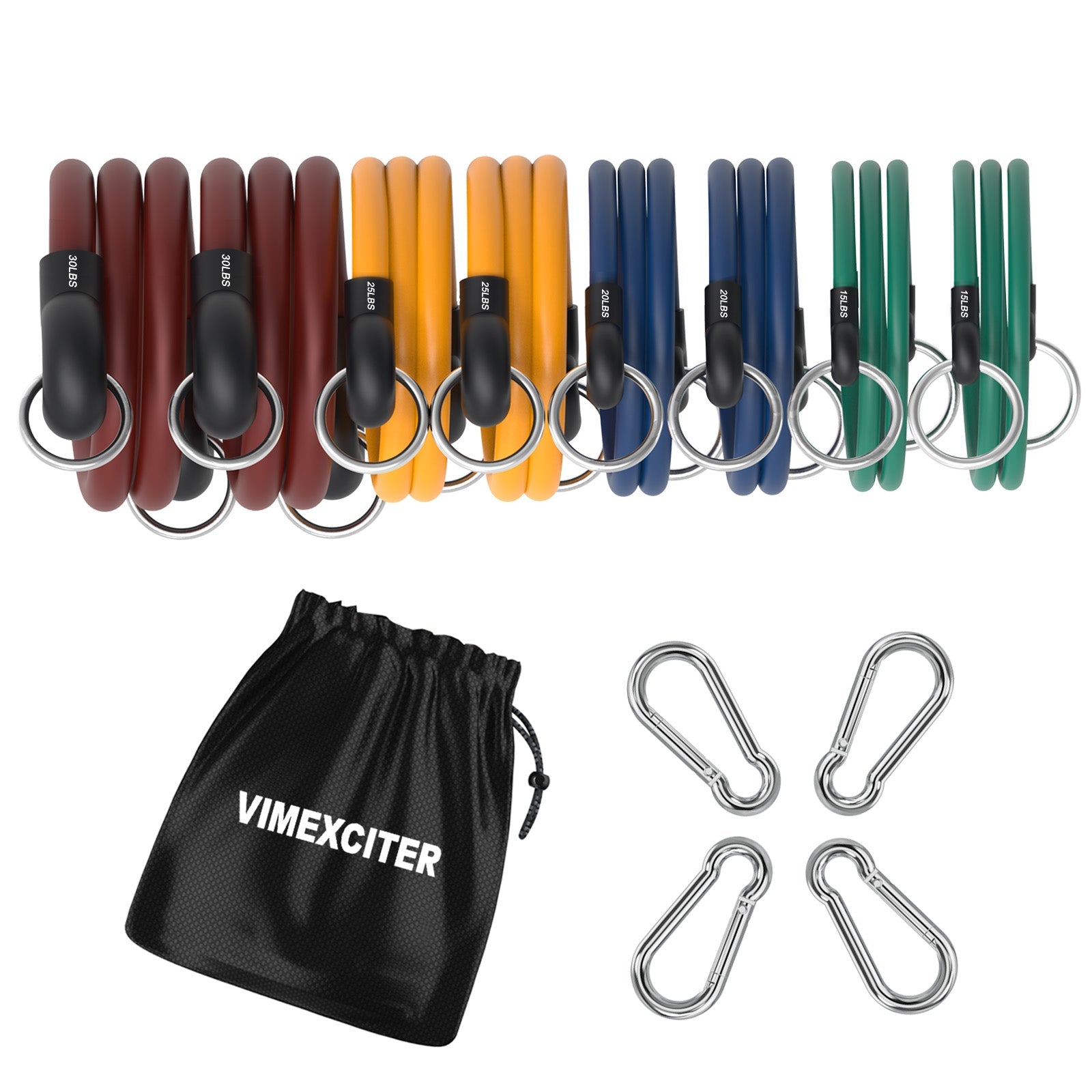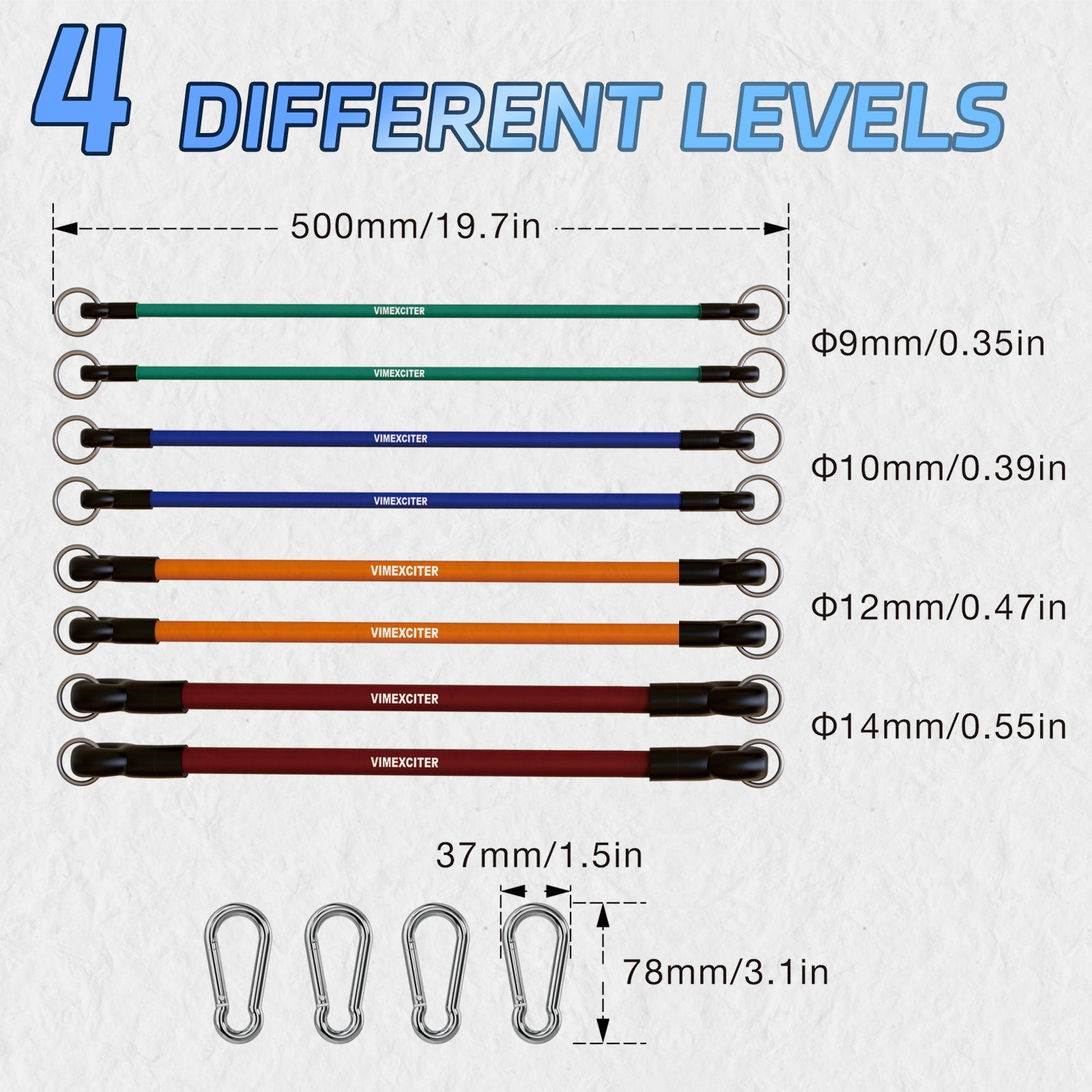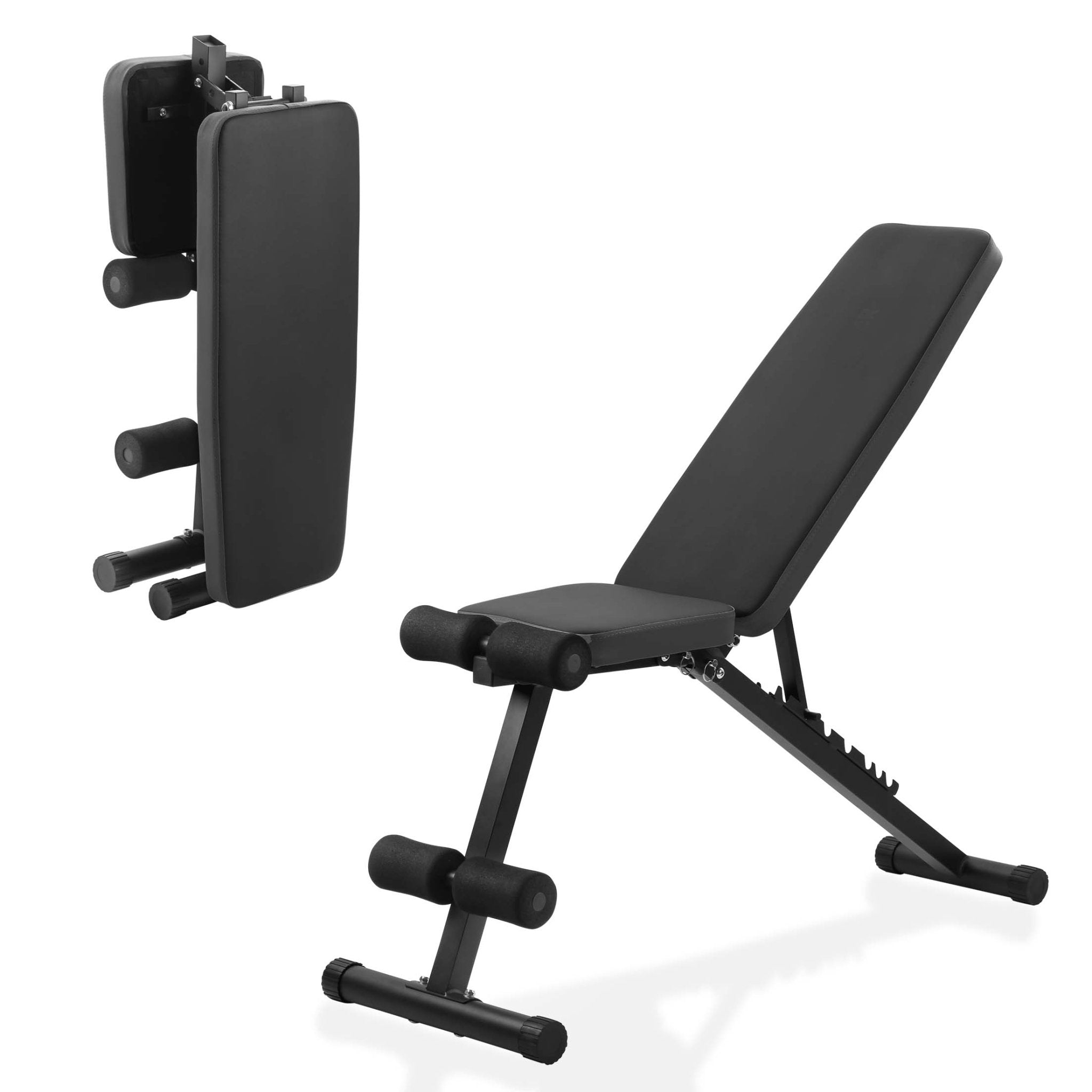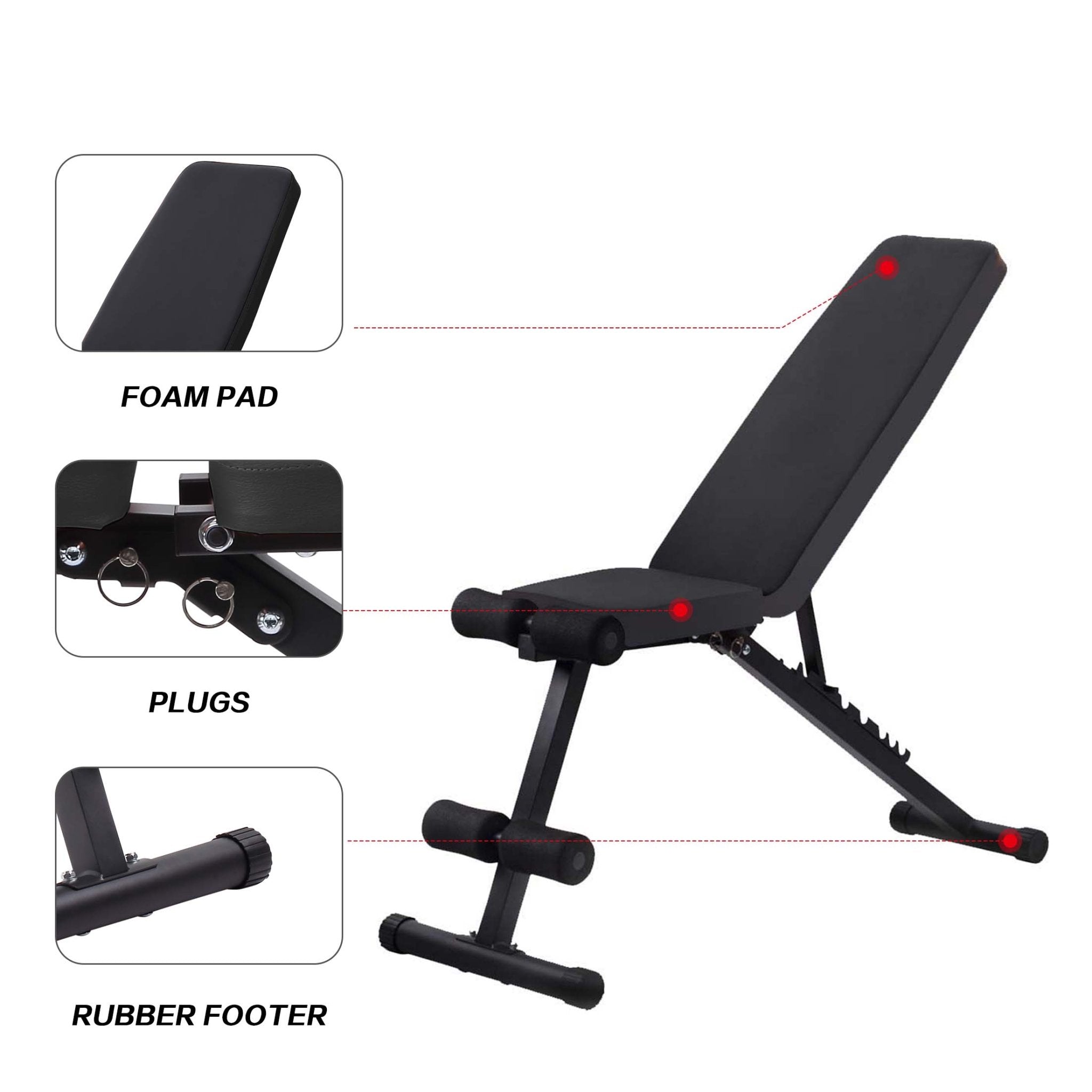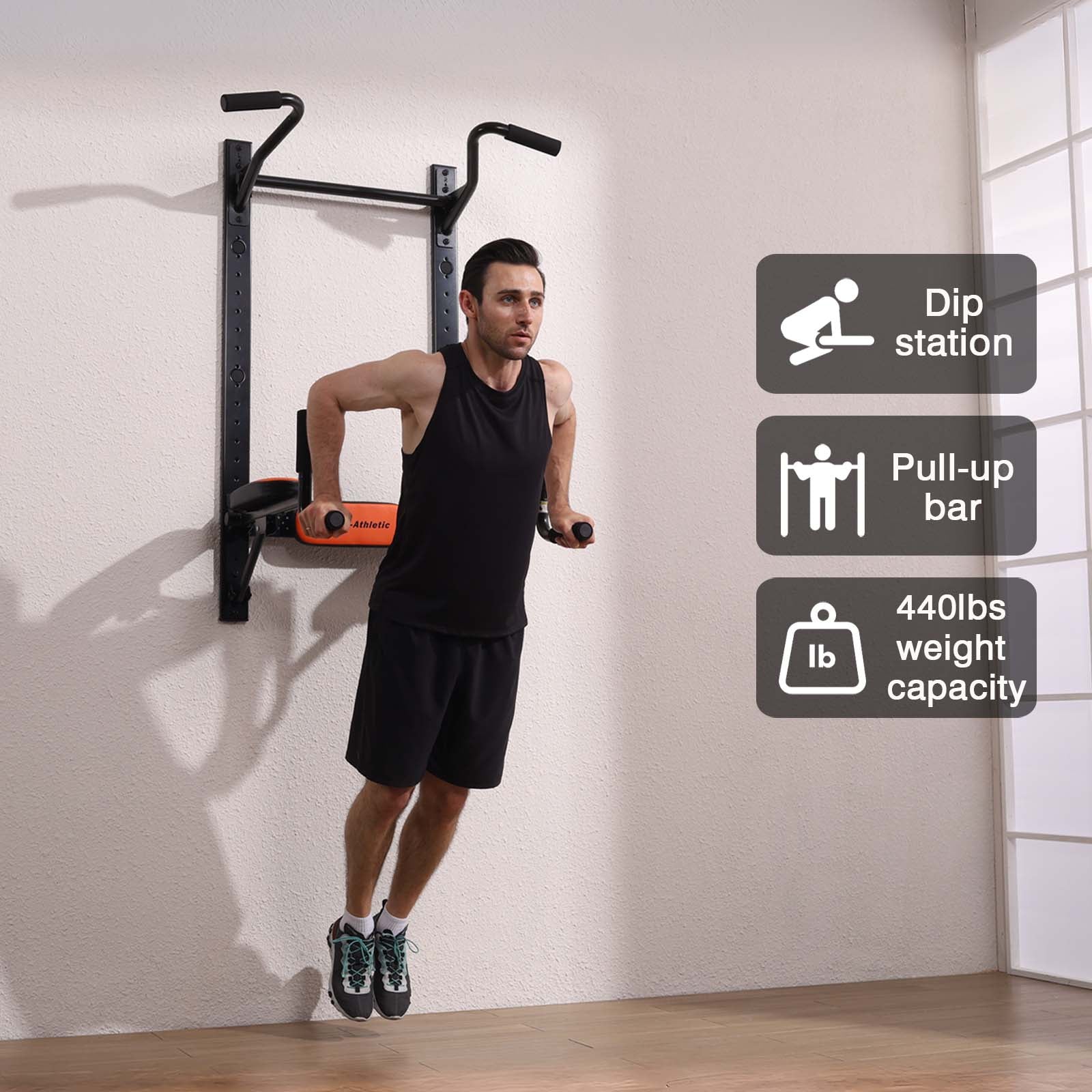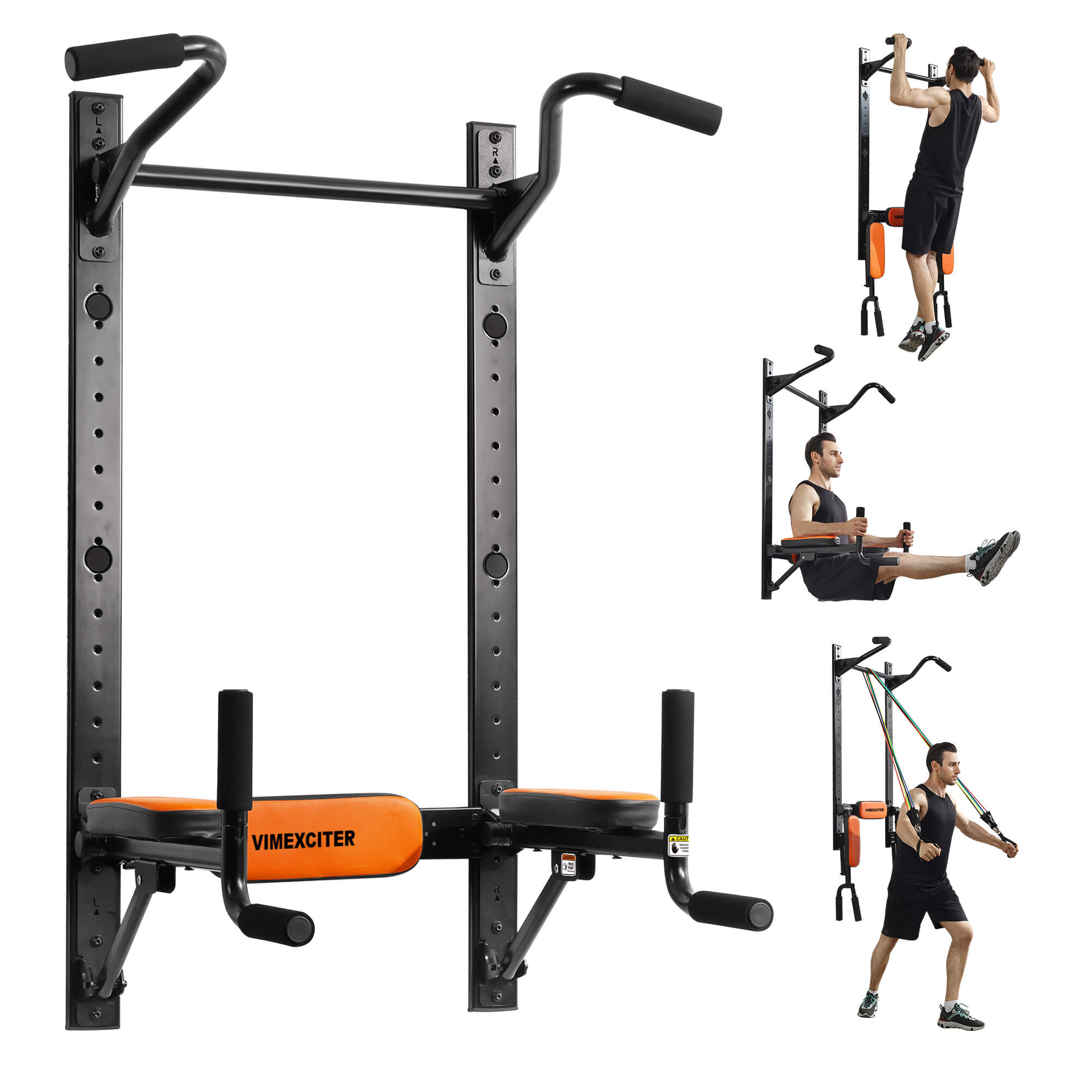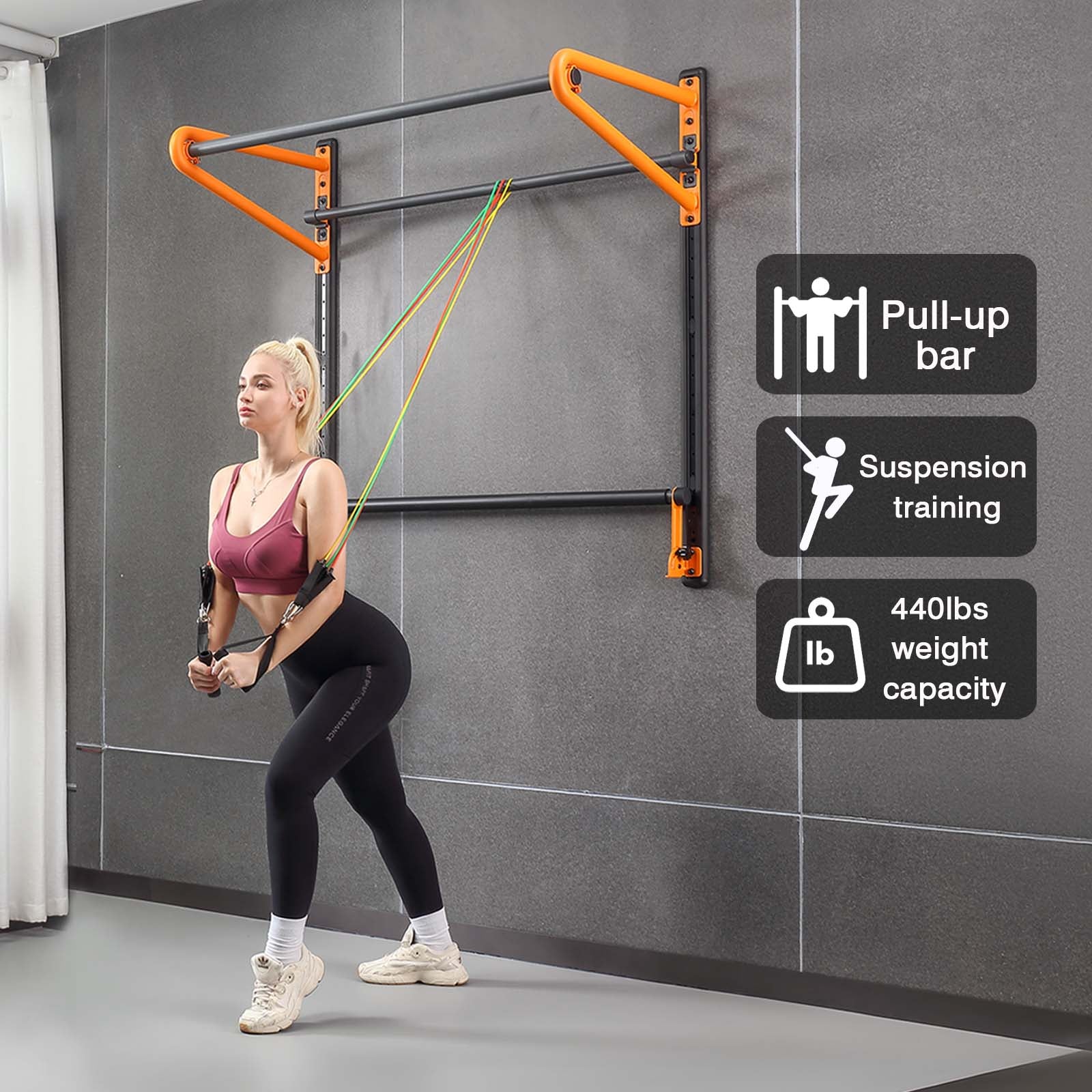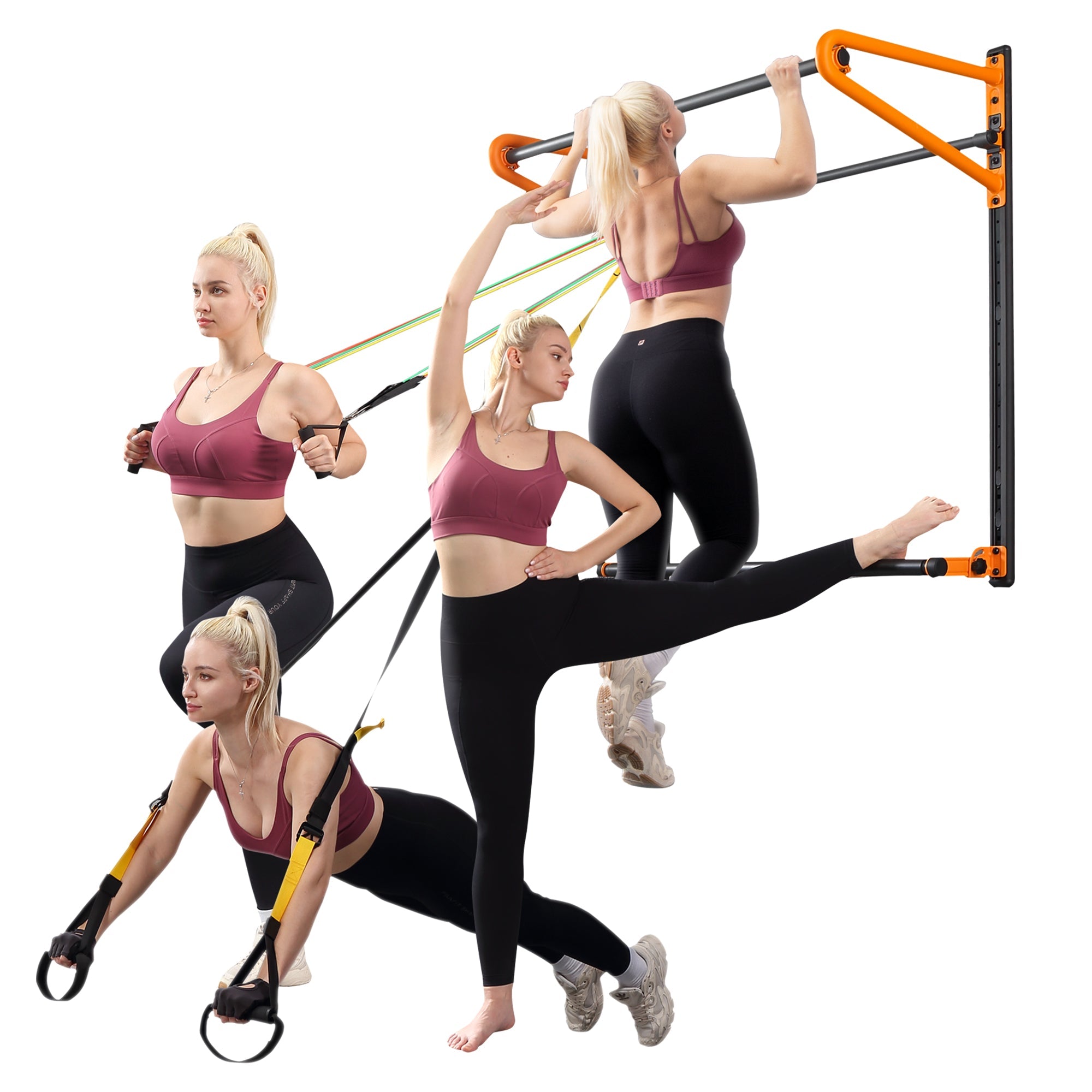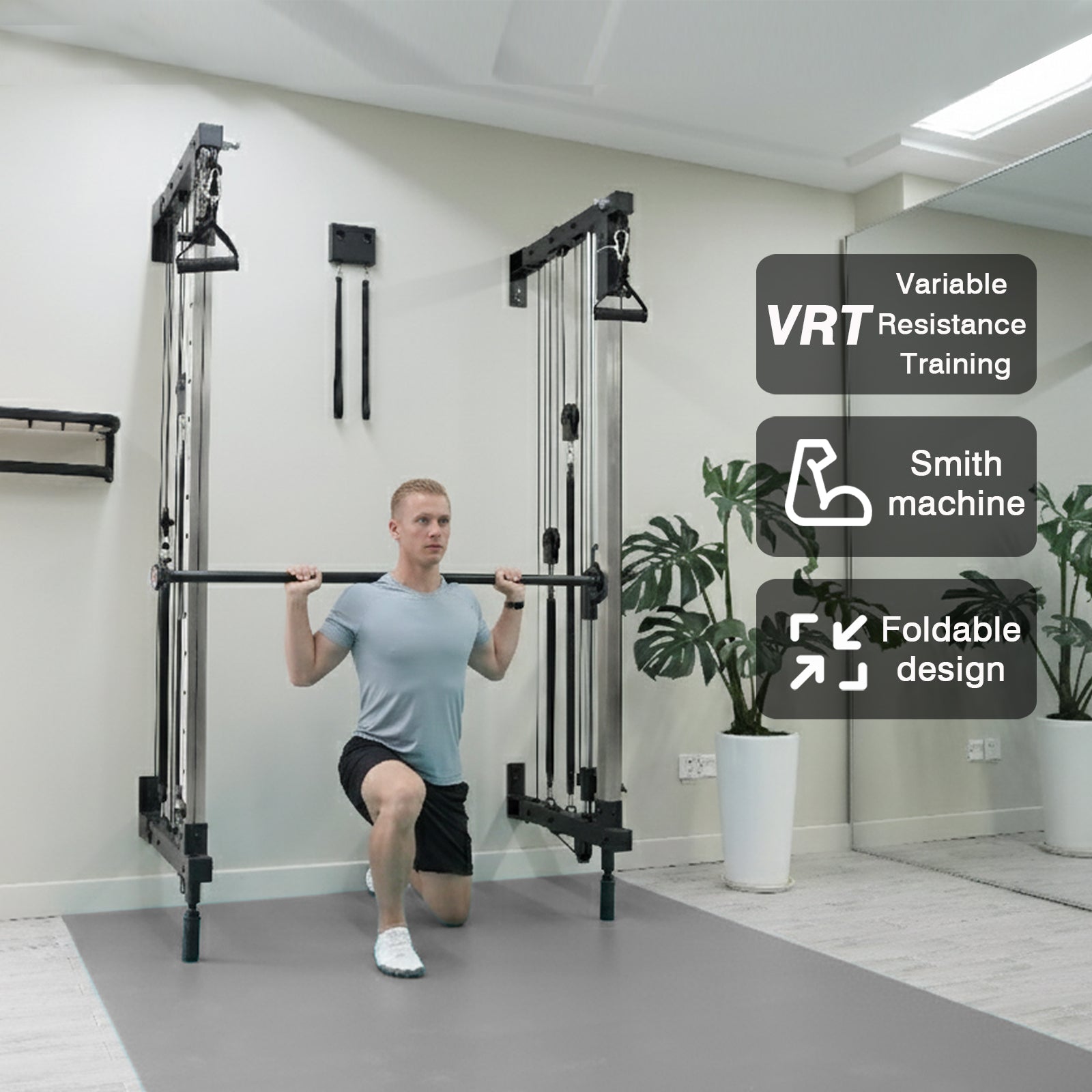
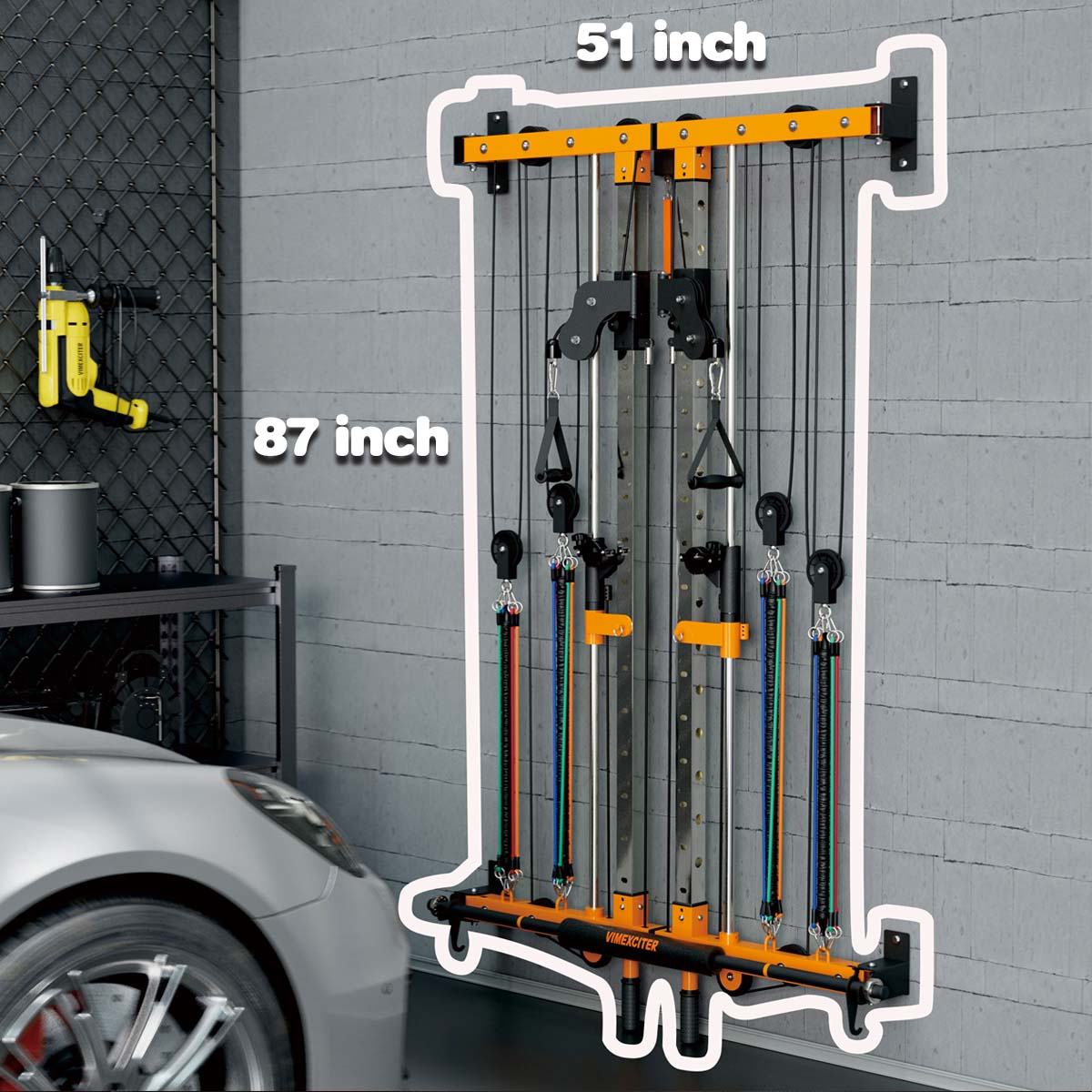
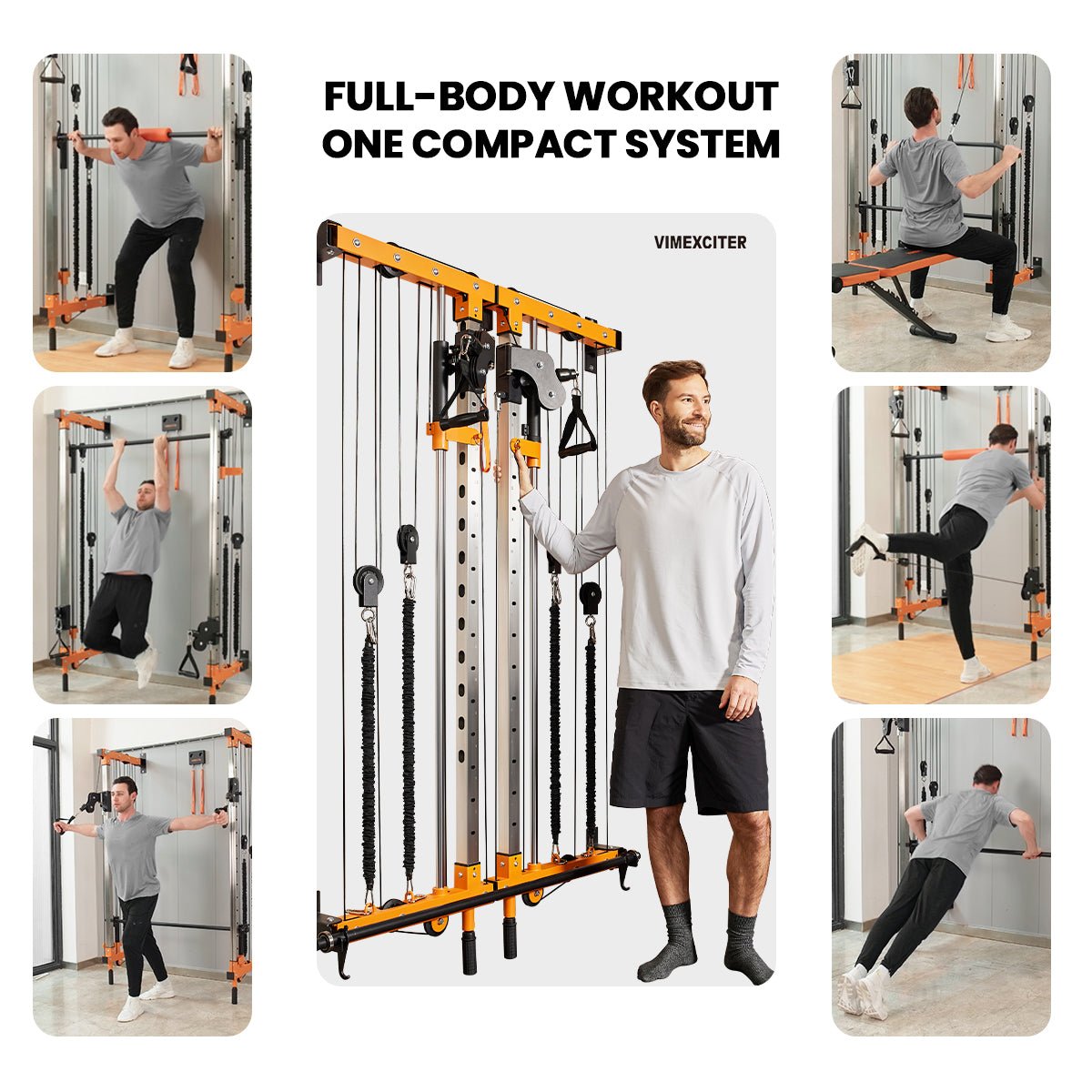
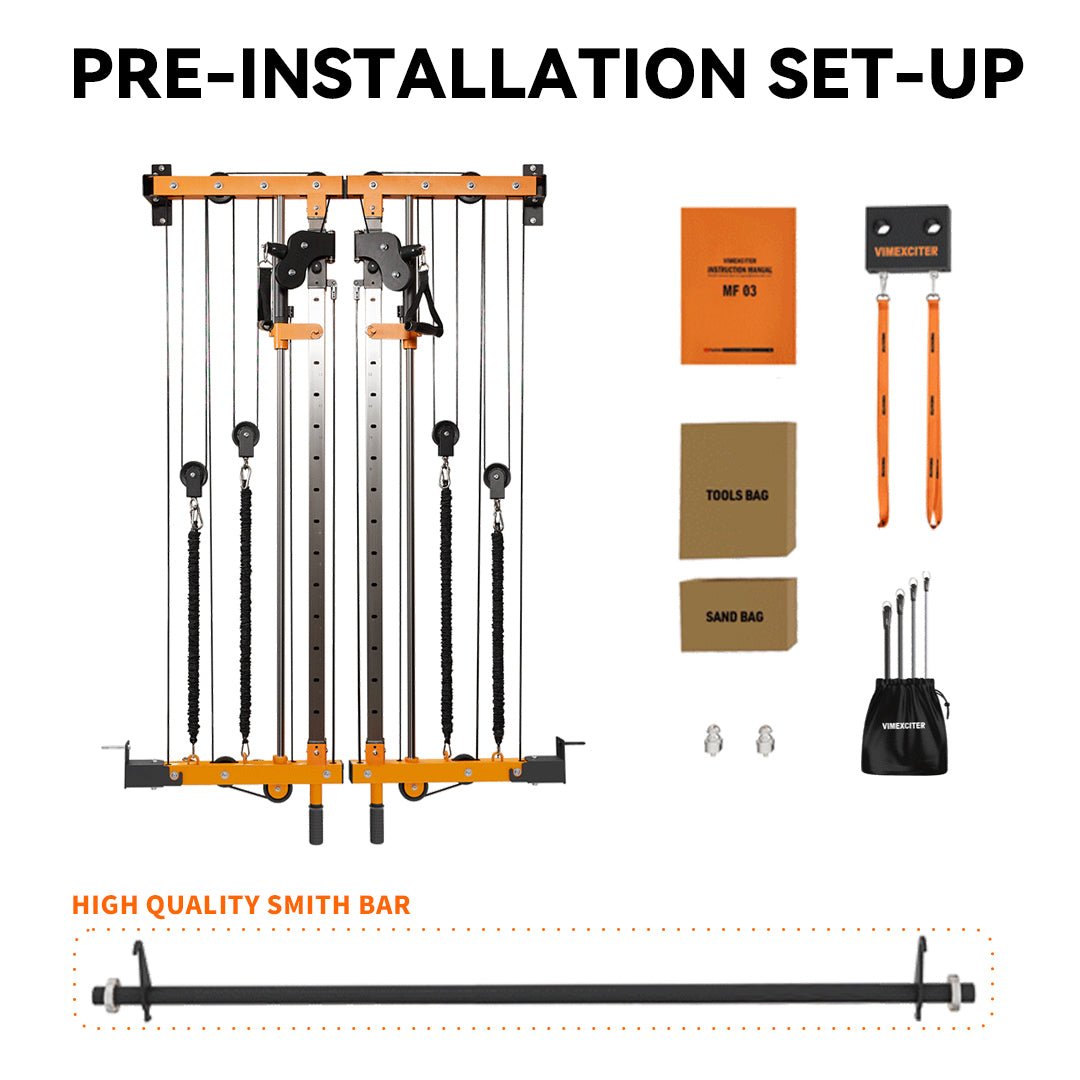
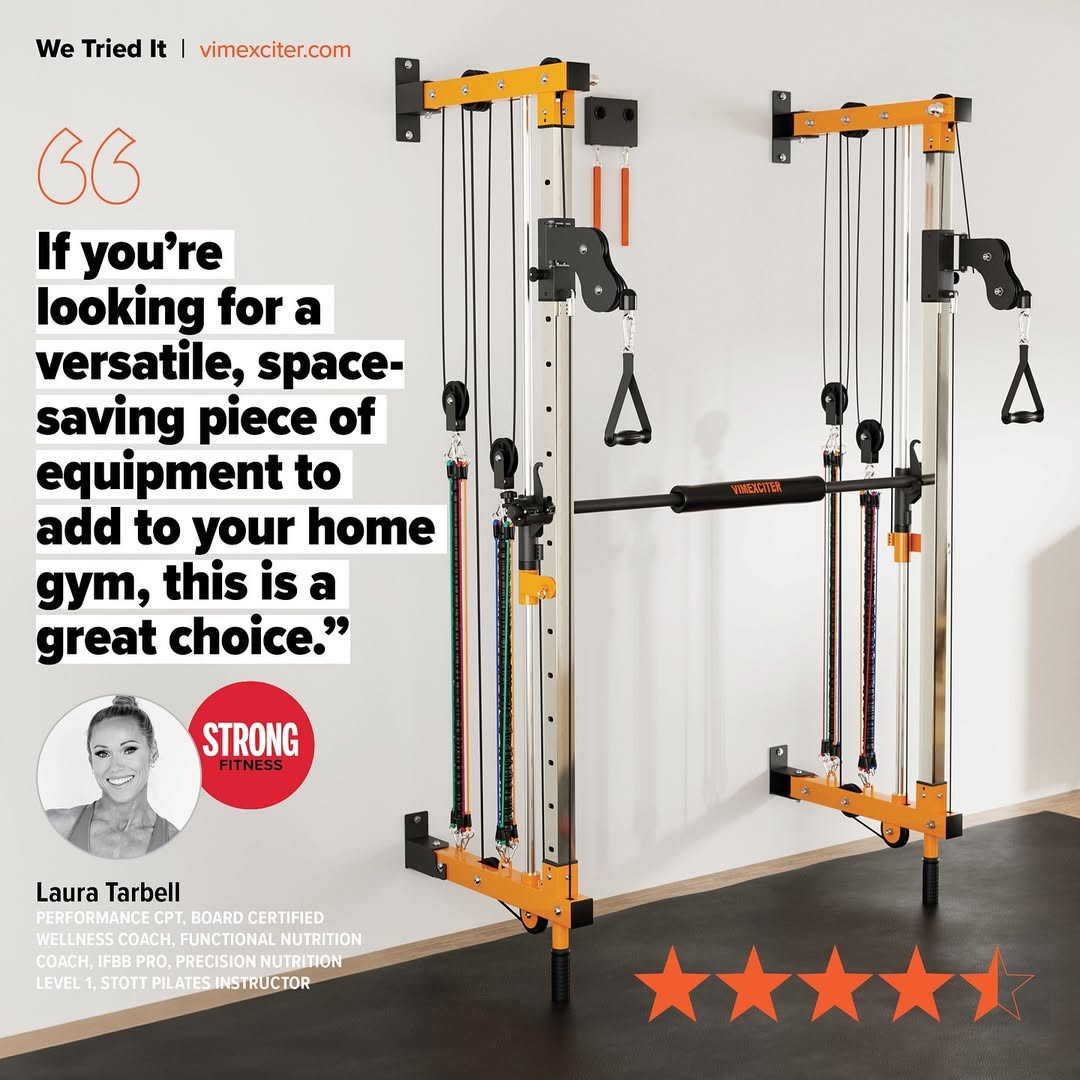
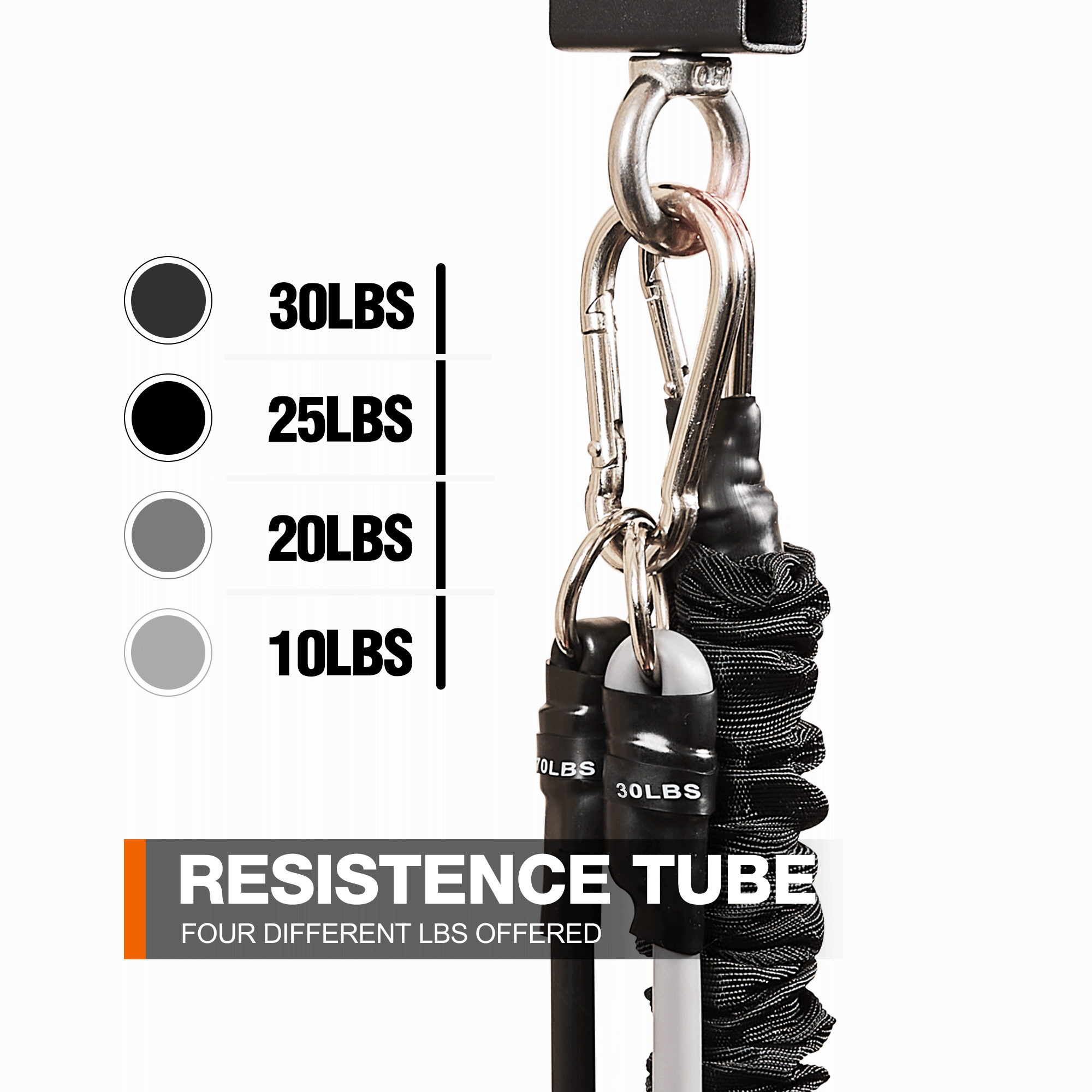
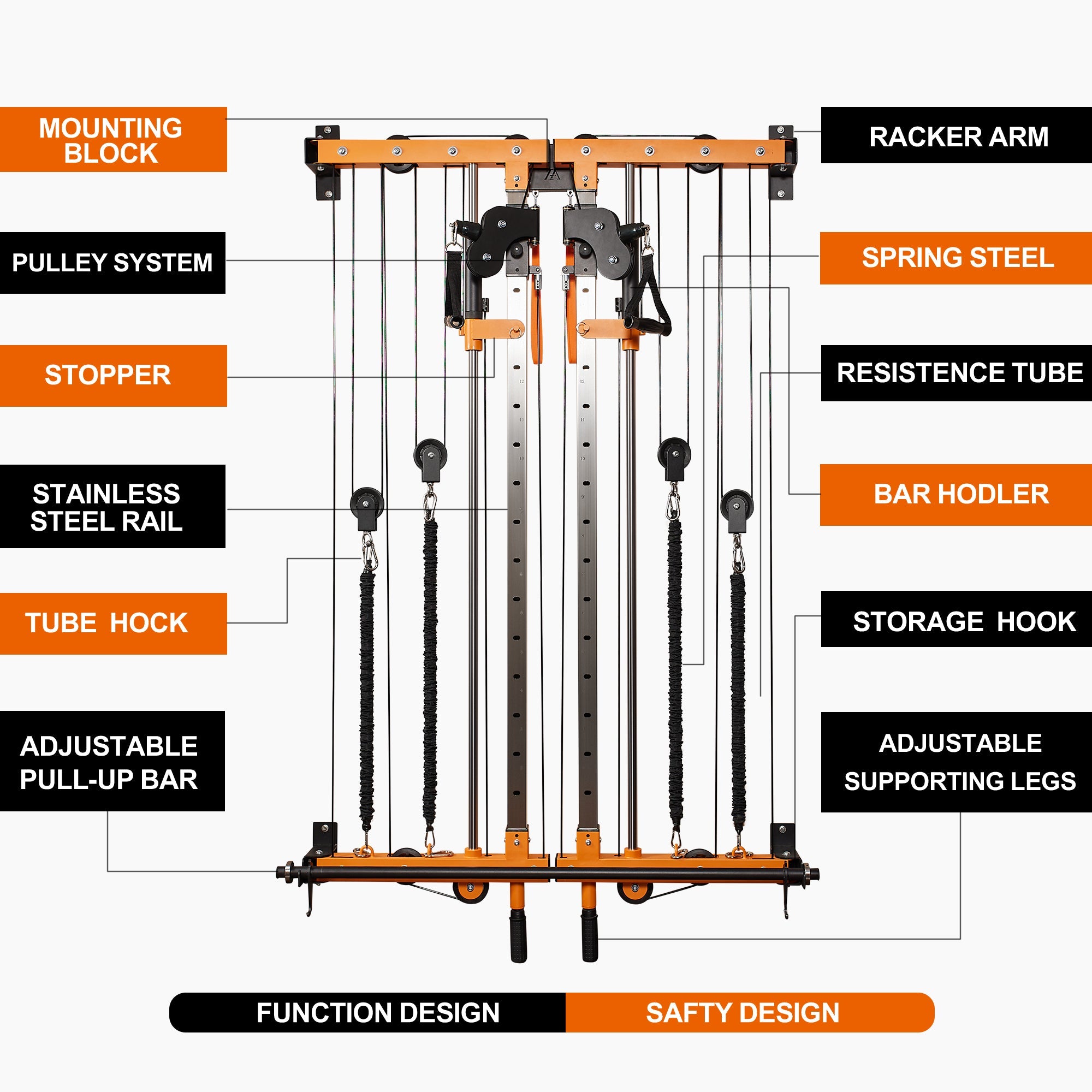
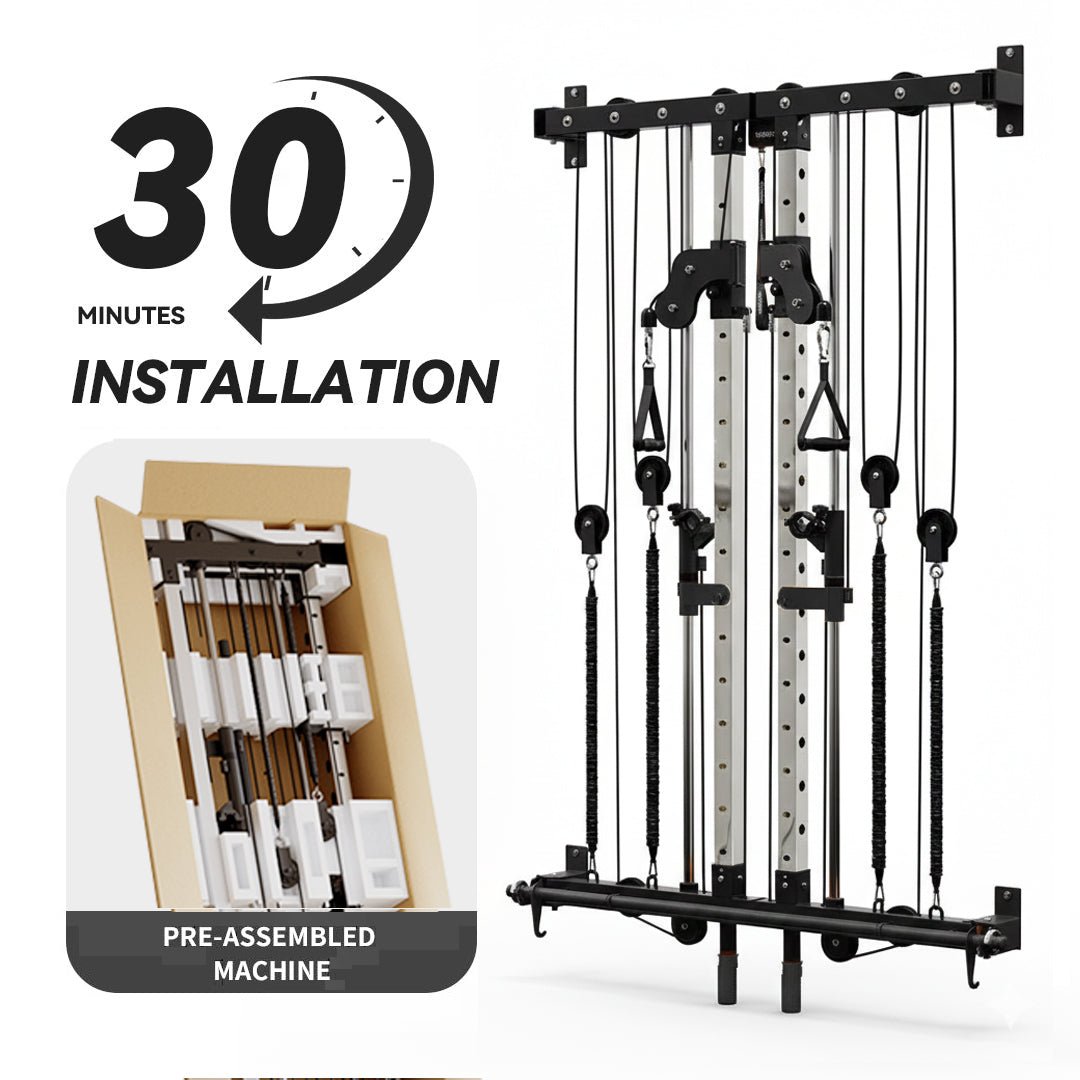
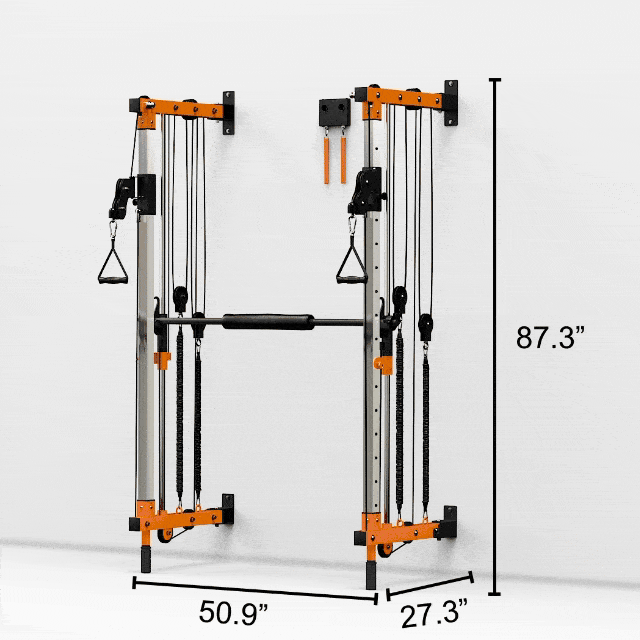
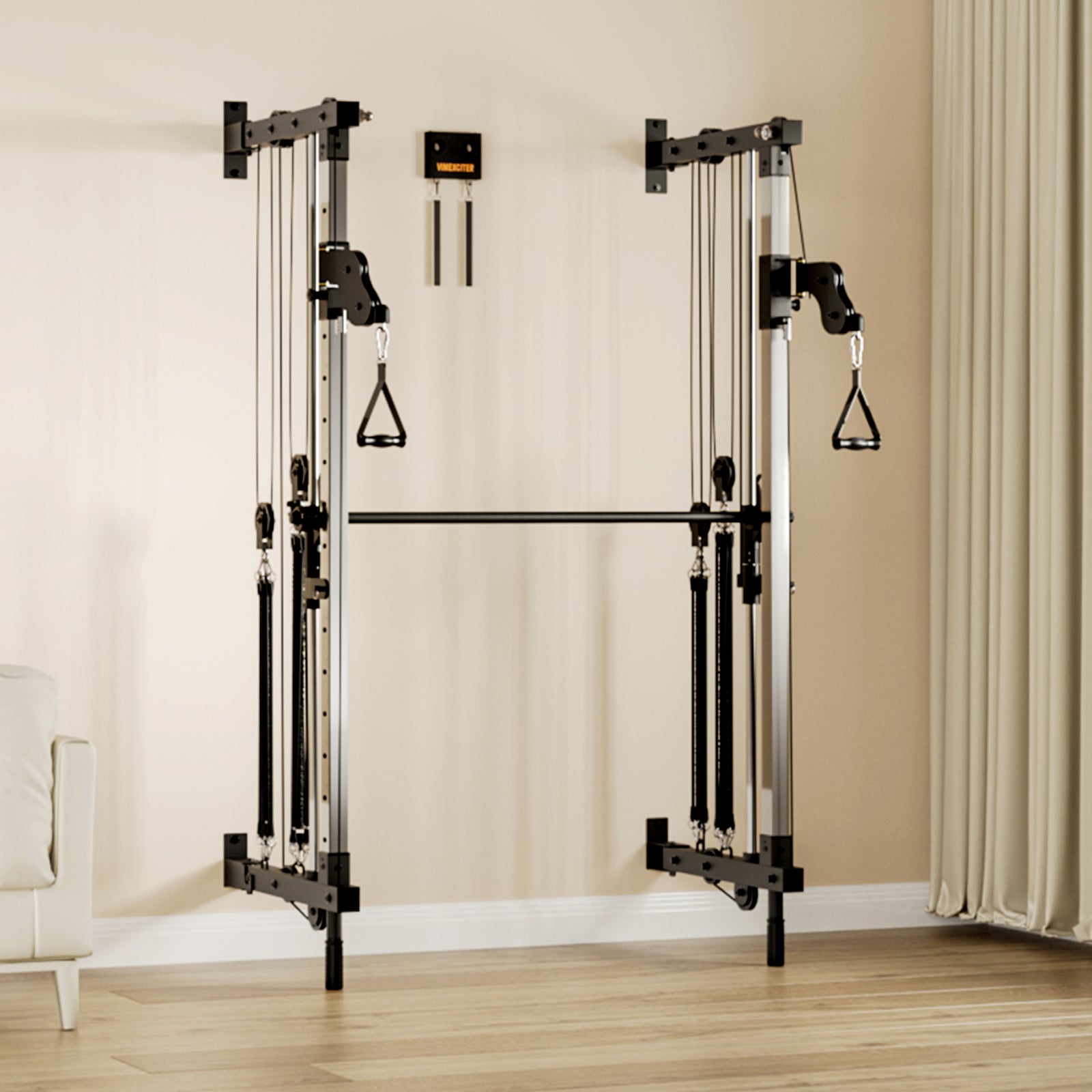
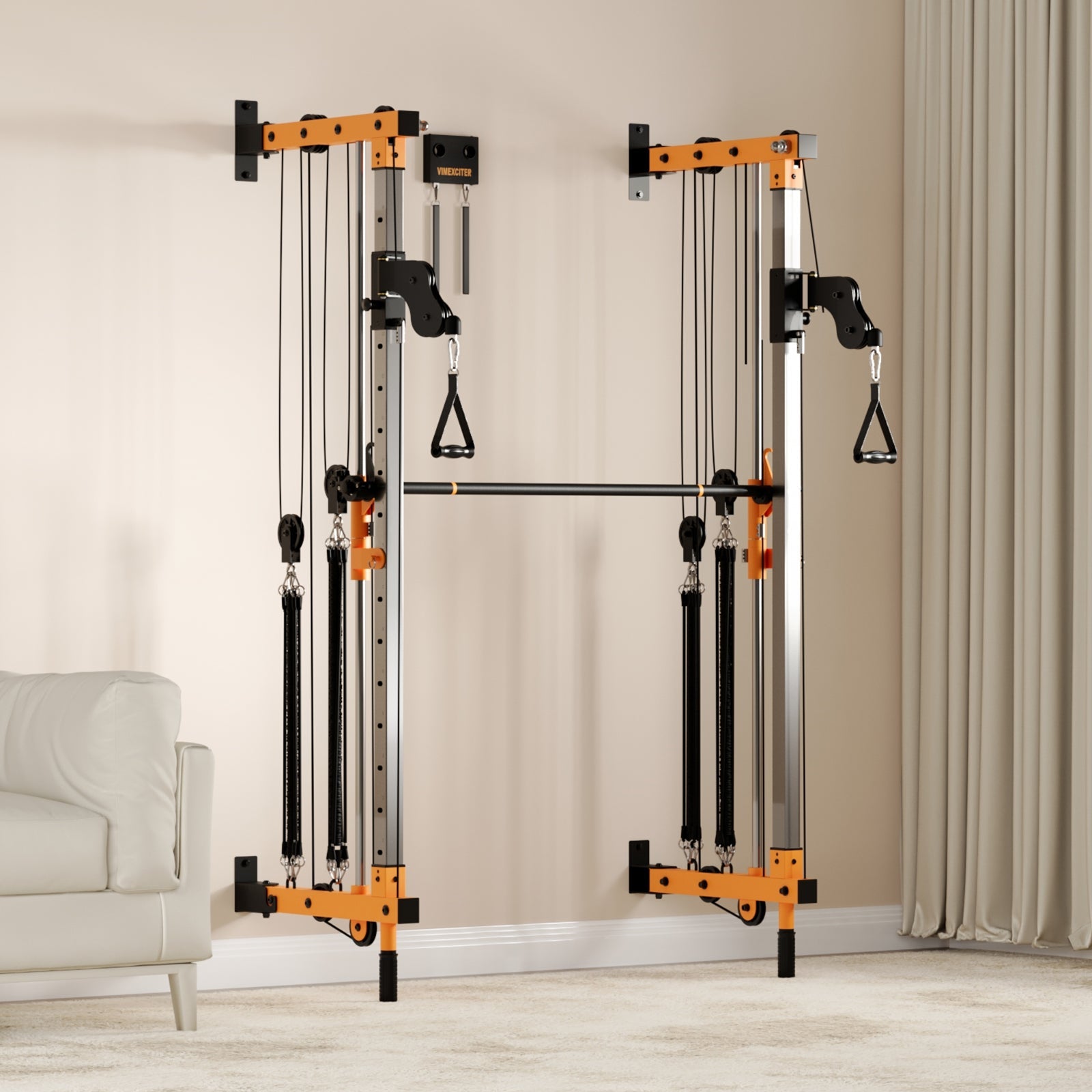
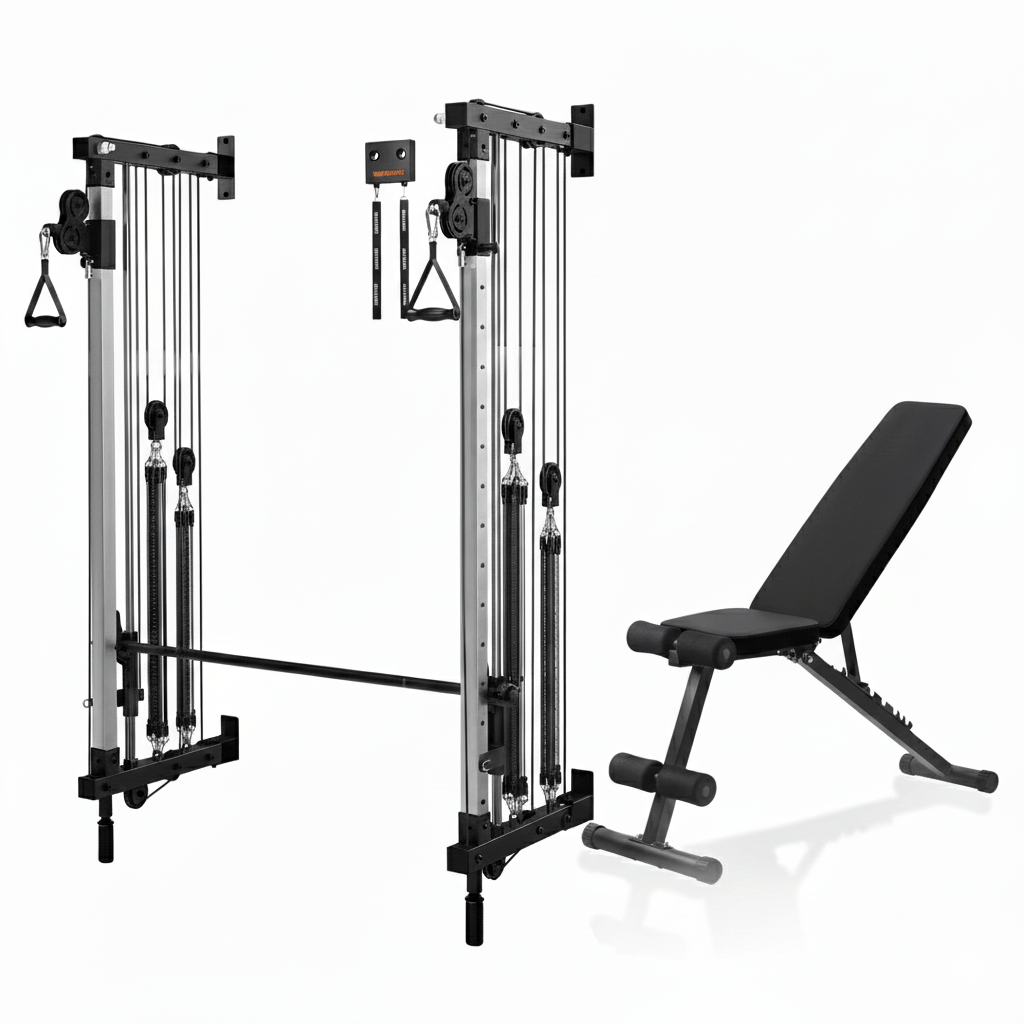
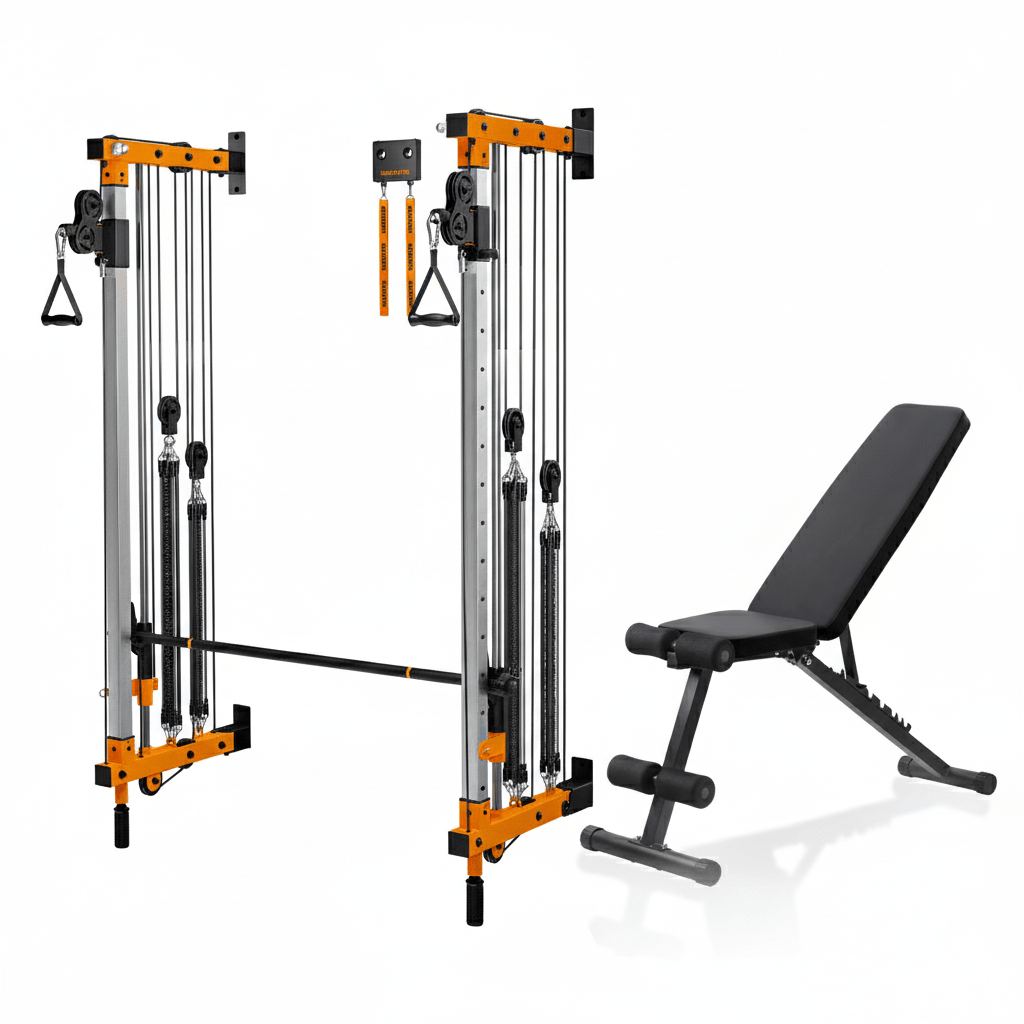
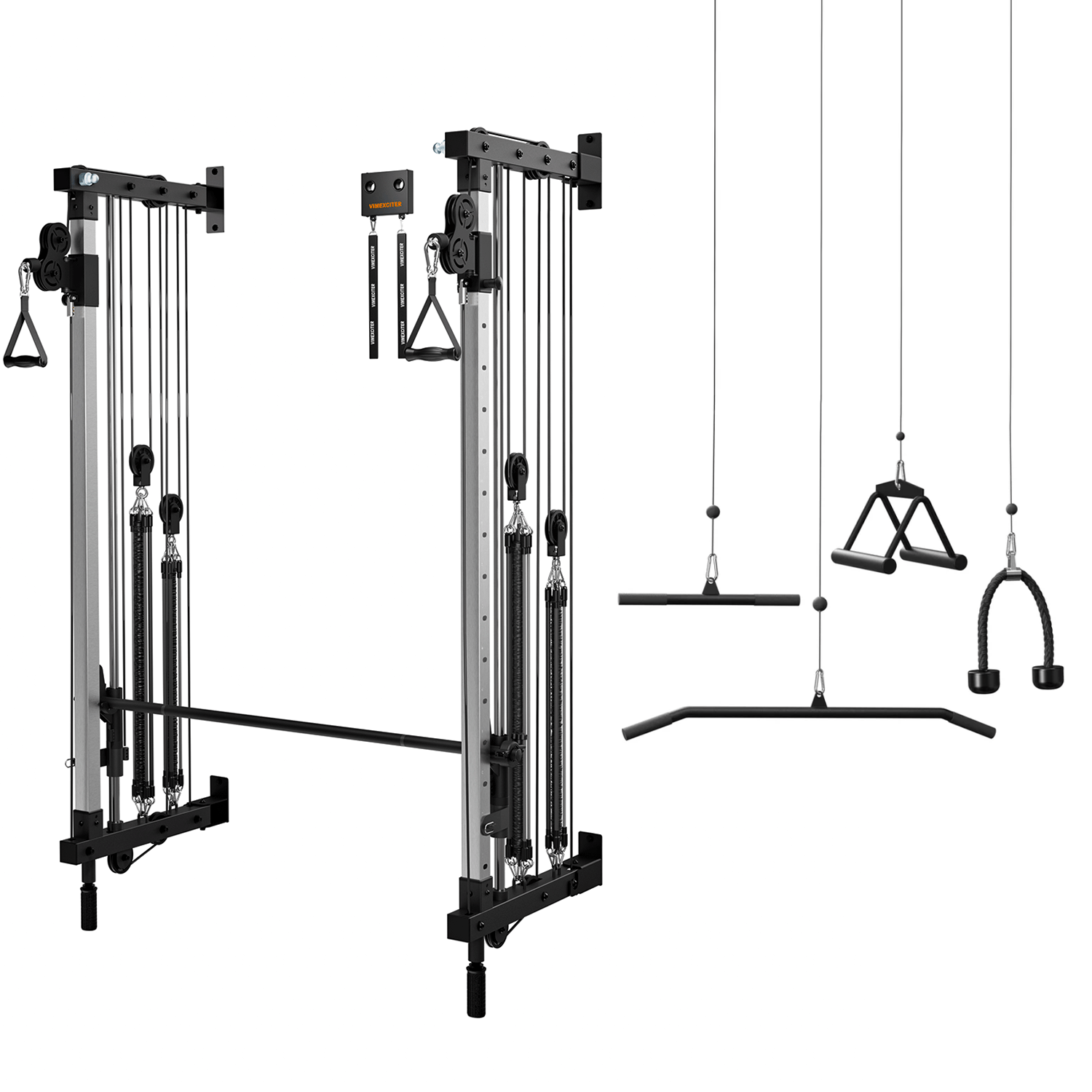
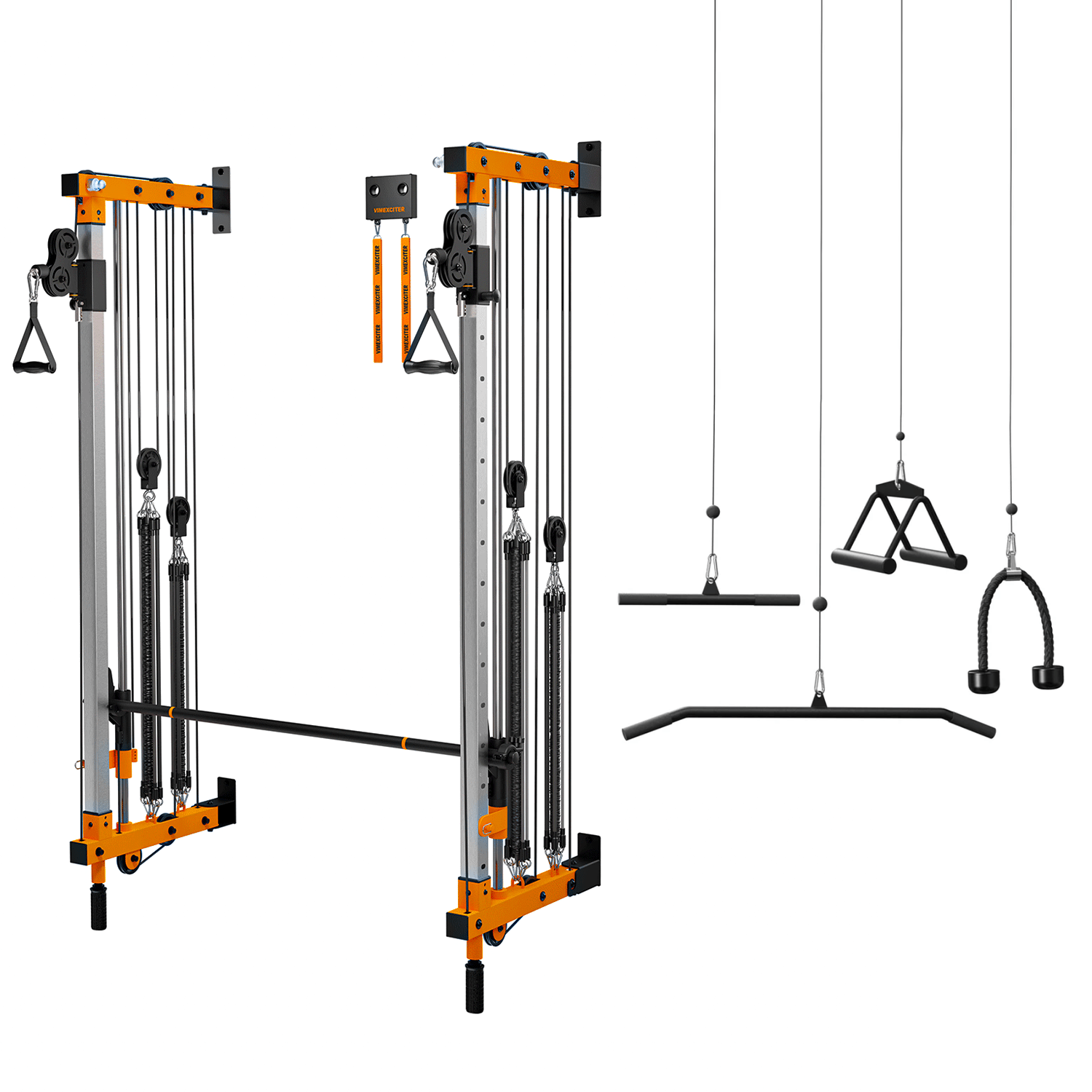
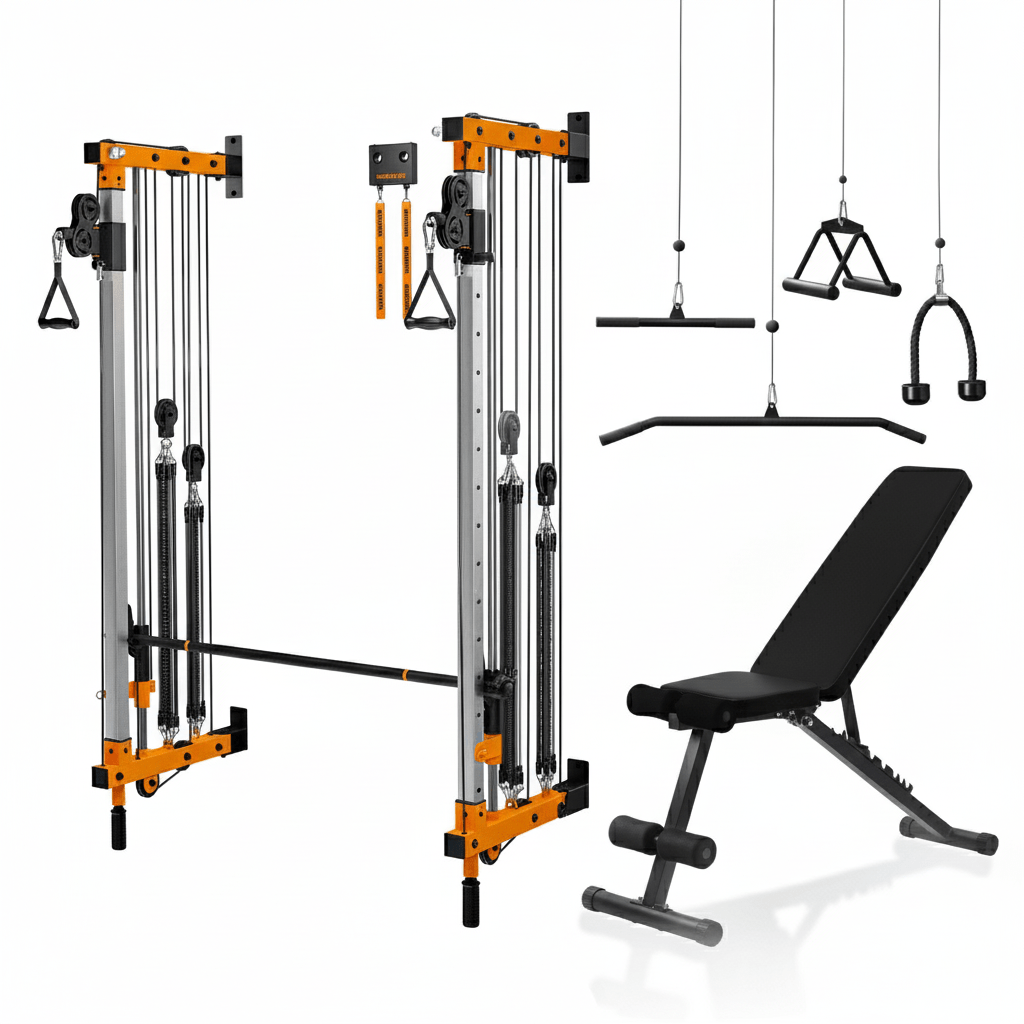
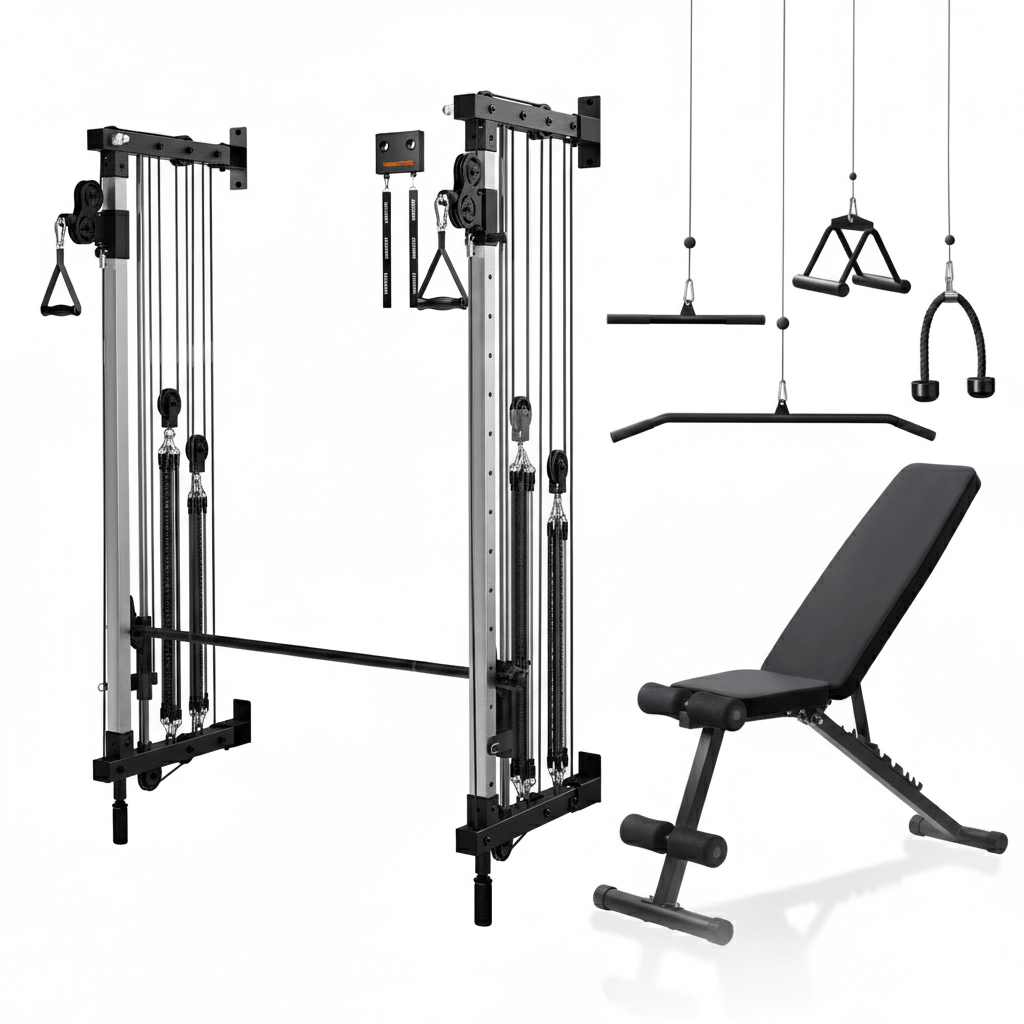
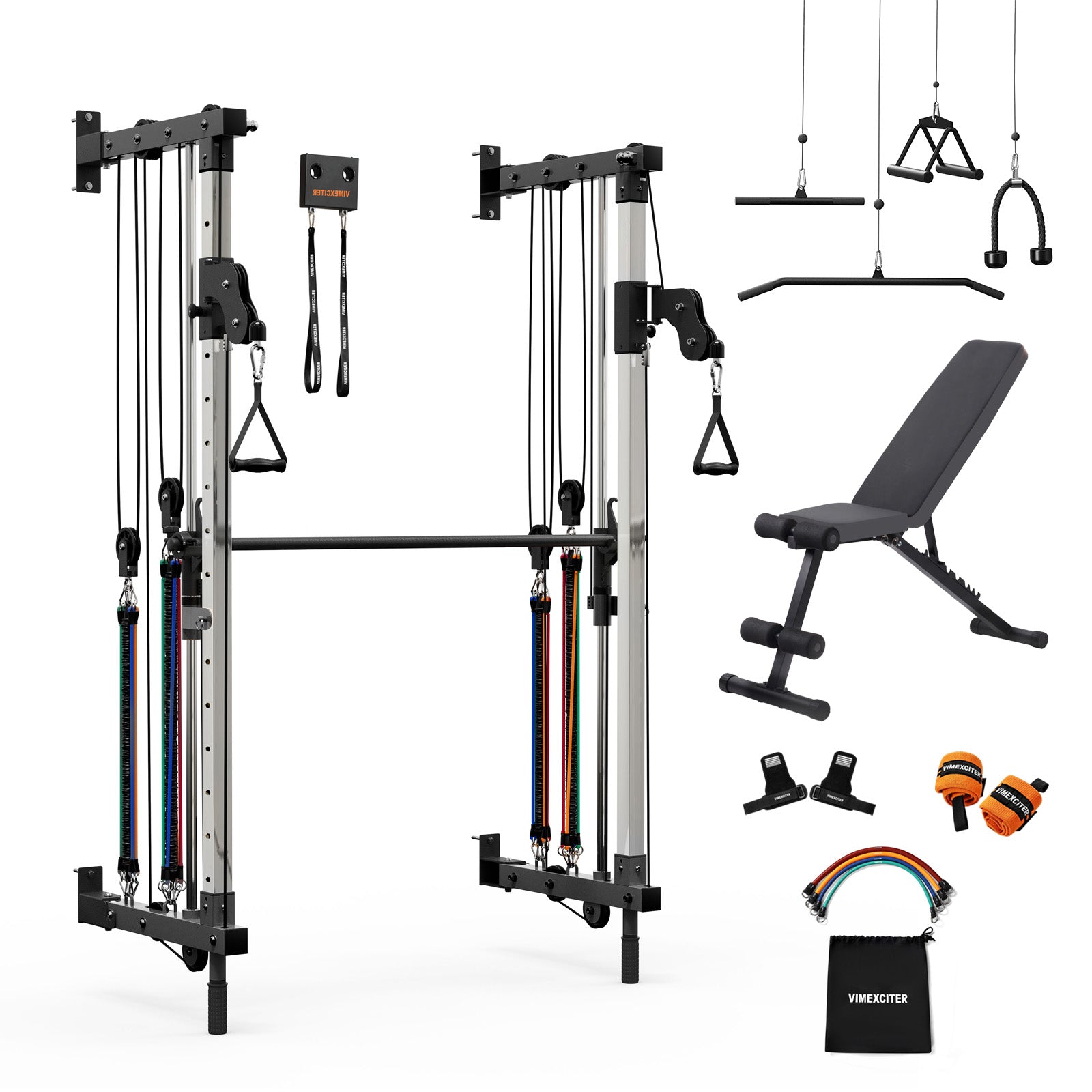
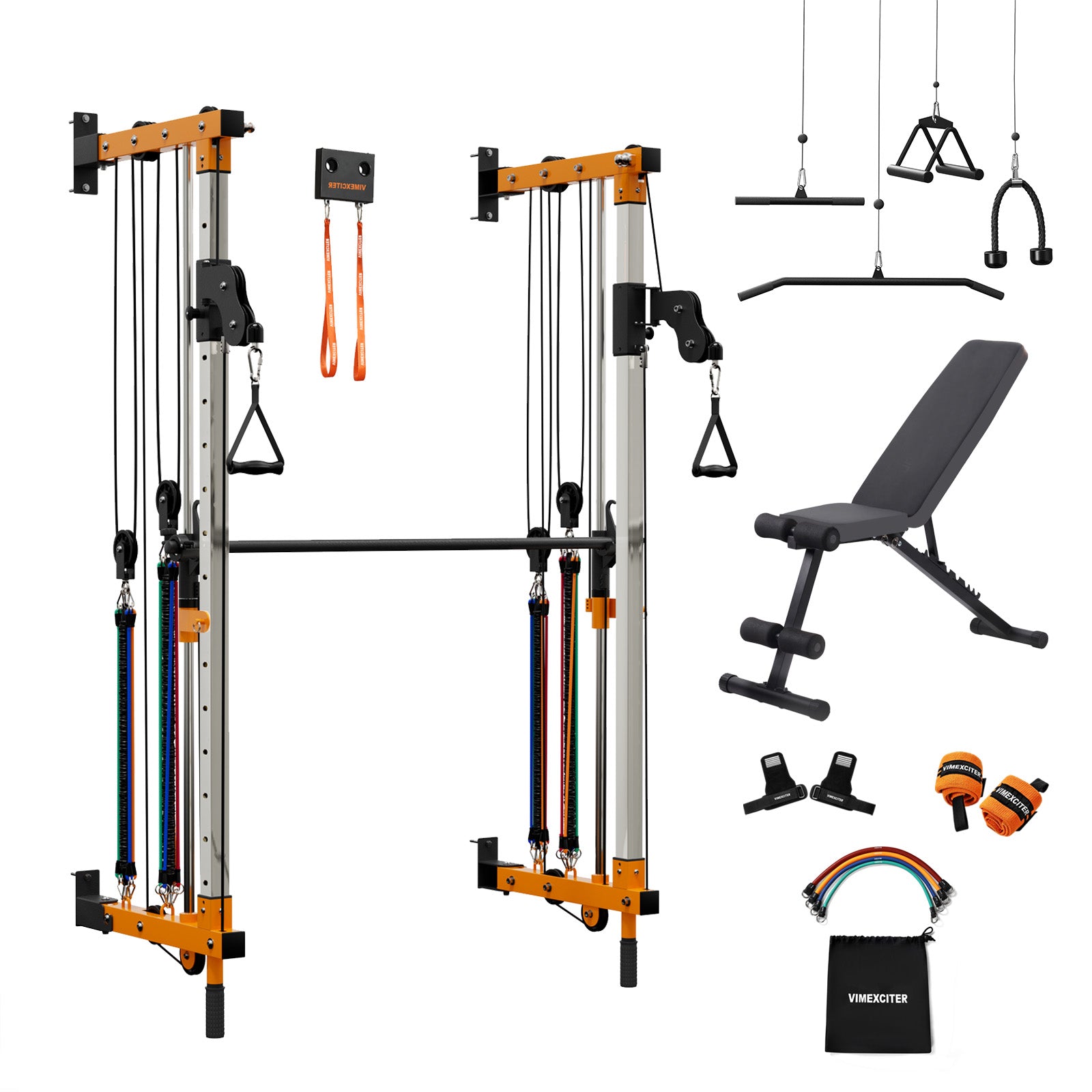
VIMEXCITER MF03 All-In-One Home Gym Wall-Mount Folding Smith Machine
Extra 5% OFF with code JOY2026
Our Complete Fitness Arsenal in One Unit. This isn't just a rack; it's an entire gym. Seamlessly transition between strength, mobility, and conditioning. It provides the versatility to effectively hit every major muscle group for comprehensive, total-body results.
Stop paying gym fees and enduring crowded facilities. The Rising machine is your key to a dedicated, high-performance, and incredibly convenient home gym experience. Achieve your fitness goals on your schedule.

See How Our Customers Use The MF03→
LEG /GLUTE
BACK
CHEST
ARM

Maximize Muscle Growth & Strength
Training Principle: VRT technology intelligently matches your muscle's strength curve, ensuring your muscles receive maximal and continuous stimulation throughout the entire range of motion.
Result: Break through the sticking points caused by traditional static weights, achieving faster strength gains and more comprehensive muscle development.
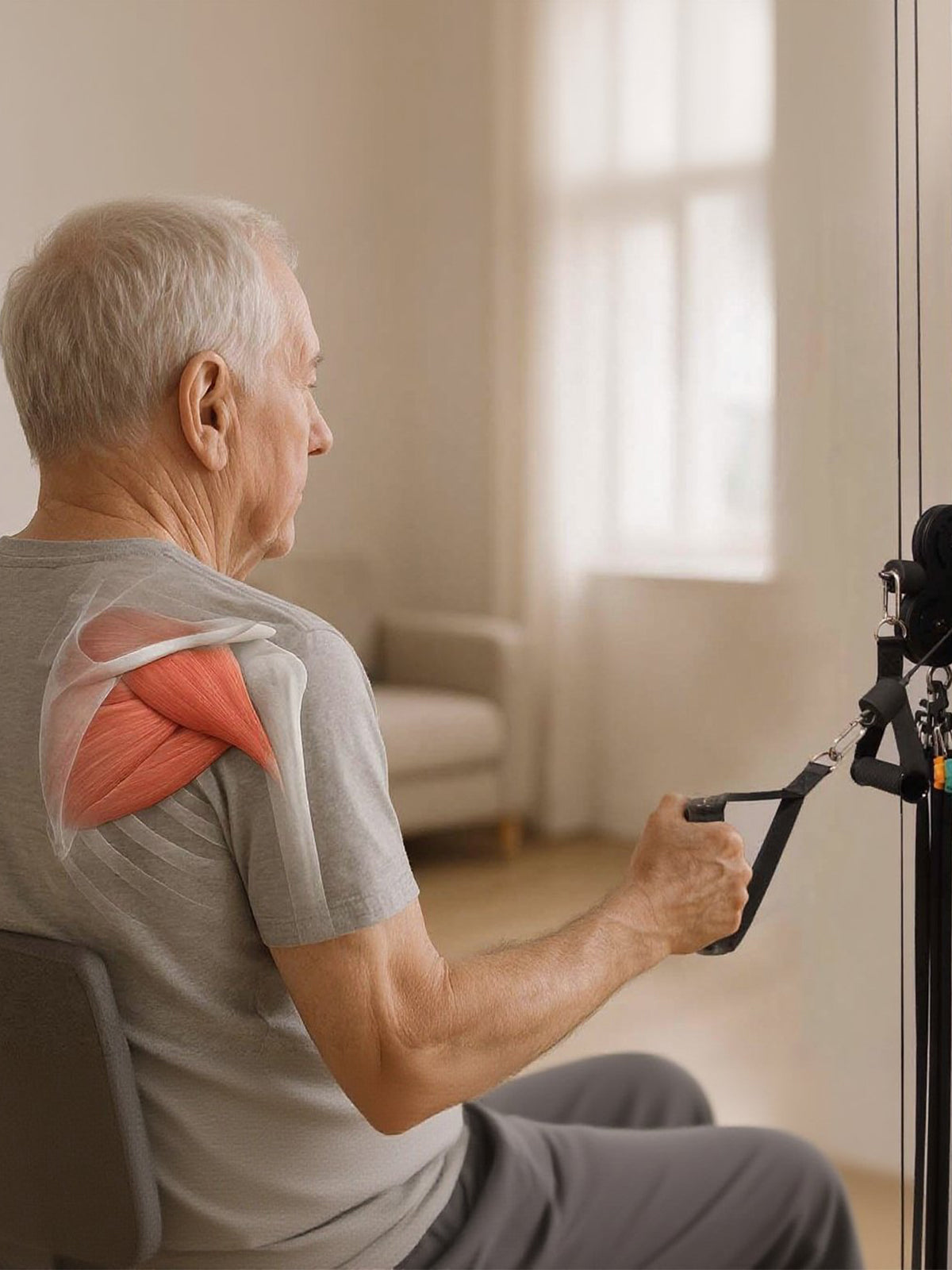
Intelligent Joint & Muscle Protection
Training Principle: Variable resistance provides lower loads at the most vulnerable starting or finishing stages of an exercise, eliminating the impact inherent in traditional weight training.
Result: Effectively reduces stress and strain on joints and ligaments. This allows you to perform high-intensity workouts while ensuring muscle safety and lowering the risk of exercise injury.
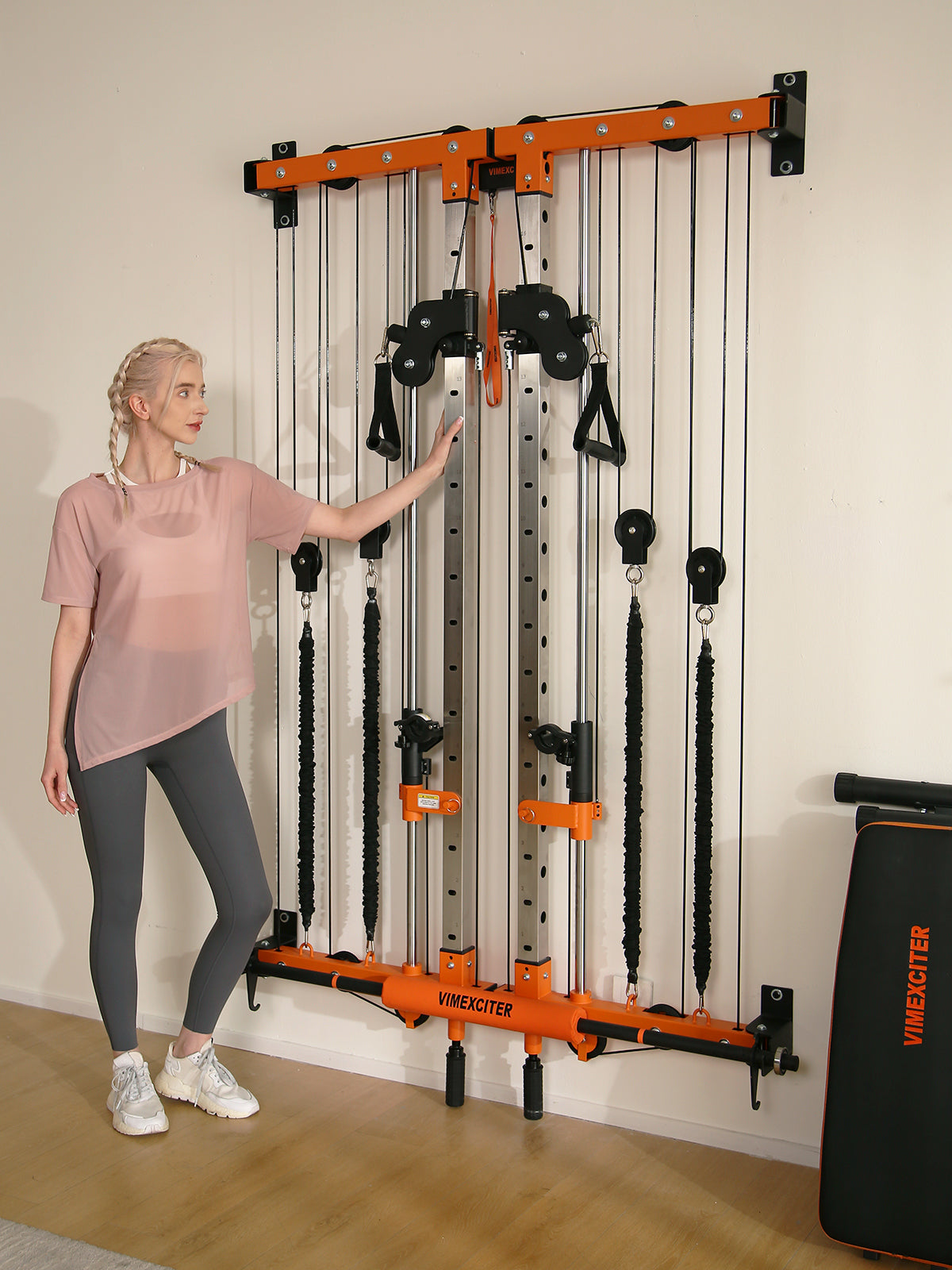
The Metabolic Edge: Burn Smarter
Training Principle:The secret to efficient fat loss lies in maximizing the burn of muscle glycogen. During a VRT workout, the increased muscle force required in the positive portion of a repetition triggers a significant, sustained glycogen expenditure.
Results:This high energy usage naturally leads to increased insulin sensitivity and helps stabilize blood sugar levels. The VRT method ensures your training is not just about strength, but about optimizing your body's overall metabolism.

Comprehensive Full-Body Coverage
Training Principle: The all-in-one system integrates the Smith machine, pulley system, and pull-up bar, offering over 100 full-body exercises.
Result: Enables you to train all major muscle groups (legs, core, chest, back, arms) on a single machine, ensuring balanced and complete physical development.
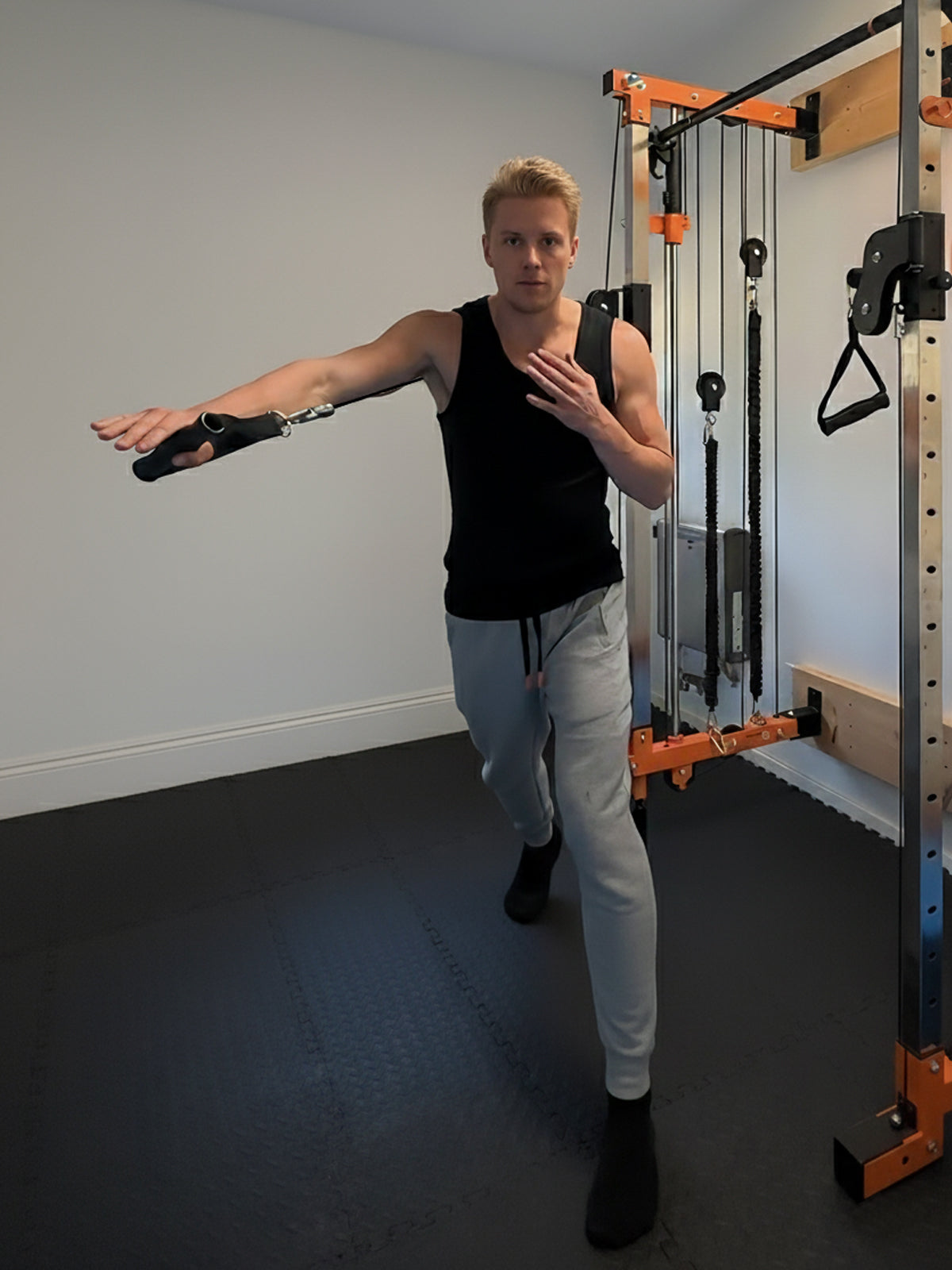
Boost Power & Athletic Performance
Training Principle: VRT technology encourages you to accelerate during the concentric phase (lifting/pushing), effectively activating fast-twitch muscle fibers.
Result: Efficiently trains your body's speed and explosive power, helping you improve overall athletic performance, whether for sports or high-intensity daily movements.
Maximize Muscle Growth & Strength
Training Principle: VRT technology intelligently matches your muscle's strength curve, ensuring your muscles receive maximal and continuous stimulation throughout the entire range of motion.
Result: Break through the sticking points caused by traditional static weights, achieving faster strength gains and more comprehensive muscle development.
Intelligent Joint & Muscle Protection
Training Principle: Variable resistance provides lower loads at the most vulnerable starting or finishing stages of an exercise, eliminating the impact inherent in traditional weight training.
Result: Effectively reduces stress and strain on joints and ligaments. This allows you to perform high-intensity workouts while ensuring muscle safety and lowering the risk of exercise injury.
The Metabolic Edge: Burn Smarter
Training Principle:The secret to efficient fat loss lies in maximizing the burn of muscle glycogen. During a VRT workout, the increased muscle force required in the positive portion of a repetition triggers a significant, sustained glycogen expenditure.
Results:This high energy usage naturally leads to increased insulin sensitivity and helps stabilize blood sugar levels. The VRT method ensures your training is not just about strength, but about optimizing your body's overall metabolism.
Comprehensive Full-Body Coverage
Training Principle: The all-in-one system integrates the Smith machine, pulley system, and pull-up bar, offering over 100 full-body exercises.
Result: Enables you to train all major muscle groups (legs, core, chest, back, arms) on a single machine, ensuring balanced and complete physical development.
Boost Power & Athletic Performance
Training Principle: VRT technology encourages you to accelerate during the concentric phase (lifting/pushing), effectively activating fast-twitch muscle fibers.
Result: Efficiently trains your body's speed and explosive power, helping you improve overall athletic performance, whether for sports or high-intensity daily movements.






All-In-One for Daily Gains
Multi-function. Space-saving. Built for full-body training at home—whenever it fits your day.

Designed for Functional Training
It’s about moving better in life, work, and sport—not just building muscle.

Safer Reps for Smarter Recovery
Recover smarter—The resistance during the training process is variable to adapt to your body, reduce joint pressure, and improve control.

Safe Training for Every Stage
Push your limits at home—four layers of protection make heavy training safer for beginners, pros, and every age in between.
Dimension
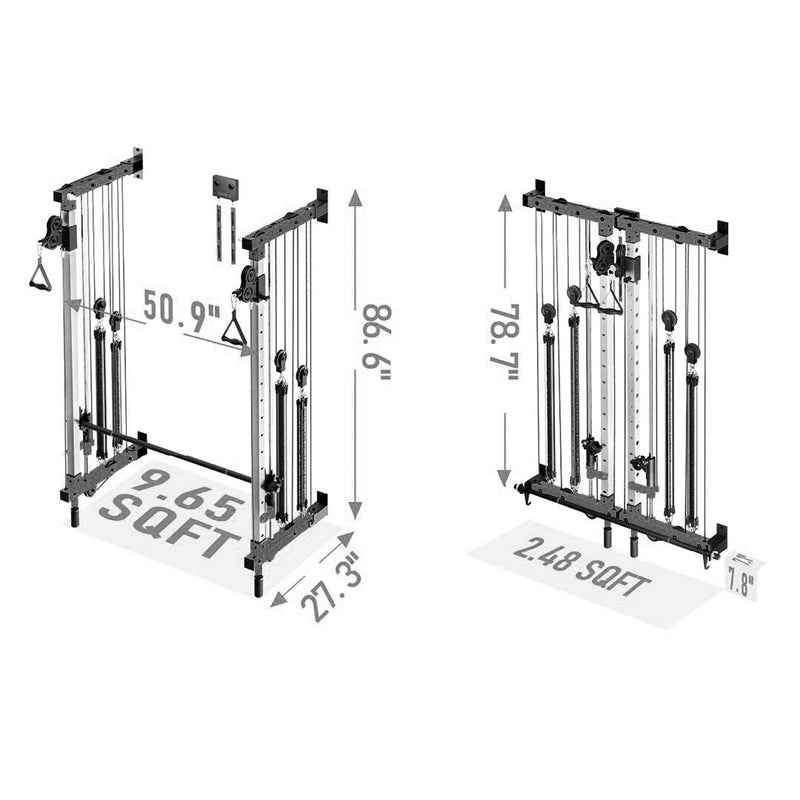
Assembly
FAQ
What is the weight capacity of the pulley and Smith machine?
220lbs for single pulley. 440 lbs for smith
What exercises can I do on the MF03?
You can perform a wide variety of cable exercises, such as the following, with many more options available:
Upper Body:Bench Press, Chest Fly, Chest Press, Bicep Curl, Pull-ups.
Lower Body:Standing Leg Raise, Squats, Hip Thrusts, Deadlifts.
Back & Core:Seated Rows, Lat Pulldowns, Woodchops, Face Full.
Shoulder Work:Lateral Raises, Front Raises, Shoulder Rehab/Prehab exercises (e.g., external rotation using pulley).
With multiple attachment points, you can easily superset exercises for a full-body workout.
Does it come with weights?
Yes, it includes:
4 springs with a total resistance of 200 lbs
8 resistance bands with a total resistance of 170 lbs
Total resistance: 370 lbs
What are the wall requirements for installing the MF03?
Brick or cement walls: Use expansion bolts to anchor it directly.
Stud walls (non-brick/cement walls): You may need to find the position of stud and install it on the stud. Use M7 screws attached.
For extra reinforcement on stud walls: Attach stringers (more than 24 inch width) to the studs with bolts, then mount MF03 to the stringer.
How many packages are there in total for MF03?
Our MF03 features a pre-assembled design and comes in a single package.
Can I use bumper plates?
For now, the MF03 does not support bumper plates. We use variable resistance instead.

What is the weight capacity of the pulley and Smith machine?
220lbs for single pulley. 440 lbs for smith
What exercises can I do on the MF03?
You can perform a wide variety of cable exercises, such as the following, with many more options available:
Upper Body:Bench Press, Chest Fly, Chest Press, Bicep Curl, Pull-ups.
Lower Body:Standing Leg Raise, Squats, Hip Thrusts, Deadlifts.
Back & Core:Seated Rows, Lat Pulldowns, Woodchops, Face Full.
Shoulder Work:Lateral Raises, Front Raises, Shoulder Rehab/Prehab exercises (e.g., external rotation using pulley).
With multiple attachment points, you can easily superset exercises for a full-body workout.
Does it come with weights?
Yes, it includes:
4 springs with a total resistance of 200 lbs
8 resistance bands with a total resistance of 170 lbs
Total resistance: 370 lbs
What are the wall requirements for installing the MF03?
Brick or cement walls: Use expansion bolts to anchor it directly.
Stud walls (non-brick/cement walls): You may need to find the position of stud and install it on the stud. Use M7 screws attached.
For extra reinforcement on stud walls: Attach stringers (more than 24 inch width) to the studs with bolts, then mount MF03 to the stringer.
How many packages are there in total for MF03?
Our MF03 features a pre-assembled design and comes in a single package.
Can I use bumper plates?
For now, the MF03 does not support bumper plates. We use variable resistance instead.








